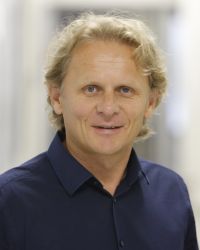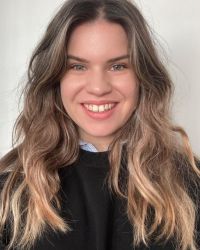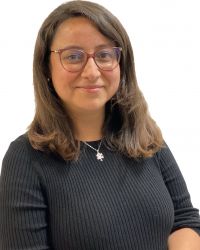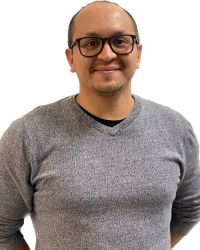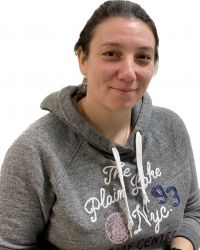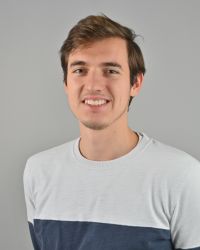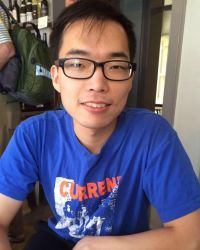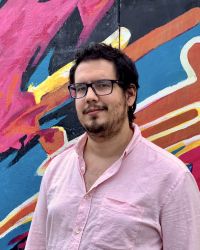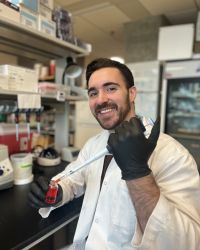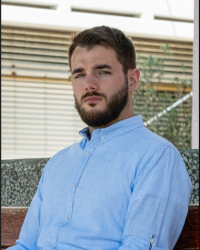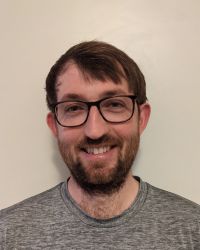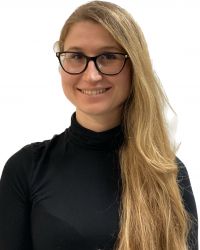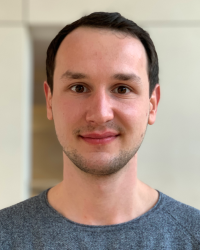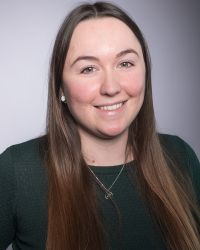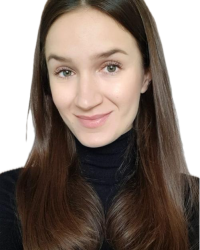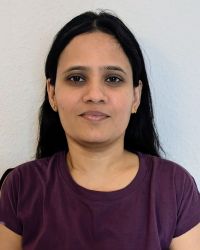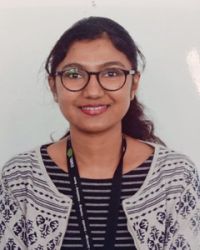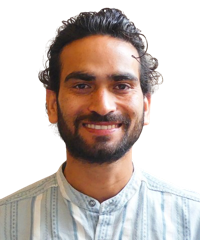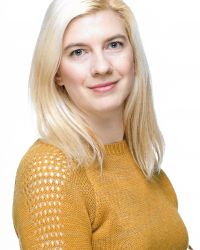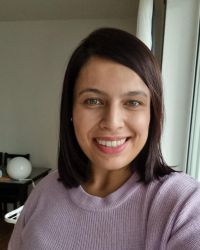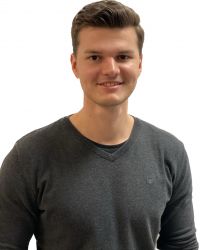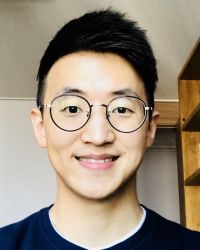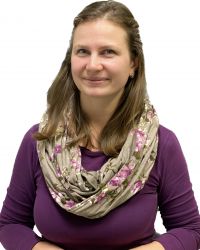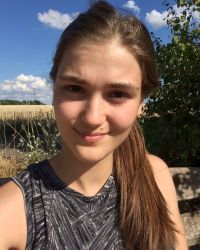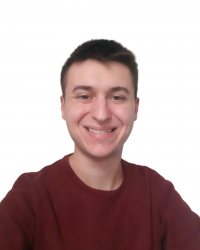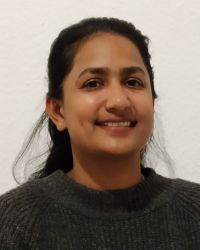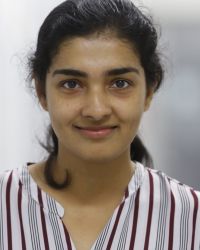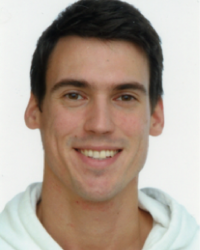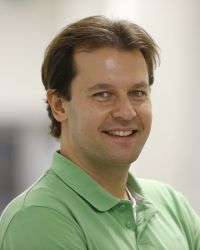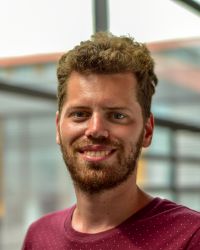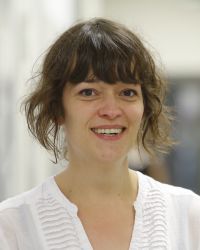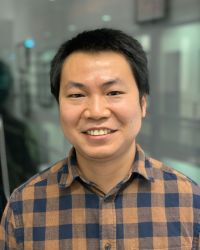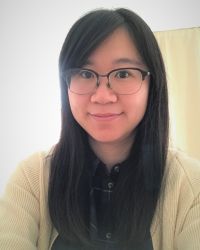The Dikic laboratory focuses on studying molecular mechanisms of the two major degradation pathways – the ubiquitin-proteasome system (UPS) and autophagy. Degradation of cellular components, either through the UPS or the lysosome (autophagy), is essential for maintaining cellular homeostasis. Disruption to either of the processes can lead to neurodegenerative diseases, cancer and other pathologies. It is critical to understand the structure and function of individual components within each of these pathways.
The IBCII is equipped with the state-of-the-art technology, allowing us an easy access to the tools and equipment needed to address outstanding questions in the field. This, coupled with the close collaboration with other groups, gives us the opportunity to carry out high-quality science, with the aim for our research to eventually be translated into medicine.
Prof. Dr. Ivan Đikić
Ivan Đikić is a leading expert in the fields of ubiquitin biology and cancer research. He is a professor at Goethe University Frankfurt and a fellow of Max Planck Society. He maintains the active research lab that enables multidisciplinary teams of scientists to study molecular principles of life and discovering pathological alterations that lead to the development of human diseases such as cancer, neurodegeneration and infection.
For his scientific work, Ivan received numerous awards, including the Ernst Jung Prize for Medicine and the Gottfried Wilhelm Leibniz Prize, the highest scientific honor in Germany. He is an elected member the EMBO, the German Academy Leopoldina and the European Academy, as well as an honorary member of the American Academy of Arts and Sciences. Ivan Đikić is committed to the education of the next generations of scientists globally. His efforts to popularize science in the public were recognized by the highest civilian state honors, The Order of Duke Branimir, bestowed by the President of Croatia.
Adela Vidov
Originally from Zadar, Croatia, Adela obtained her Master’s degree in Drug Discovery and Safety from the Vrije Universiteit Amsterdam in The Netherlands in 2022. Her master’s thesis focused on synthesizing peptides as inhibitors of the β-catenin protein of the Wnt-signalling pathway.
In 2023, Adela joined the Dikic and Dötsch group as a shared PhD student through the IMPRS program at the Max Planck Institute of Cellular Biophysics, in Frankfurt. Her doctoral research is based on proximity-induced protein degradation and its biophysical characterization.
Dr. Adriana Covarrubias
Adriana was born in La Serena, Chile. She obtained her Agronomic sciences degree at the University of La Serena. Her thesis was focused on the tolerance strategies under abiotic stress in Chenopodium quinoa. Adriana then decided to study a PhD in Cellular and Molecular Biology at the University Austral of Chile, Valdivia (Chile). Her research was dedicated in the Vitamin C homeostasis at the Central Nervous System and first focused on how ascorbic acid regulates the trafficking of SVCT2 transporter and second how the failure in the ascorbic acid homeostasis impaired the glucose uptake modulation in Huntington disease under the supervision of Dr. Maite A. Castro. In November 2017, Adriana joined the group of Ivan Dikic as a Postdoctoral researcher investigating the role of linear ubiquitination in the remodeling heart during myocardial infarct. Also, Adriana is currently studying novel mechanisms involved specifically in the regulation of ER-phagy.
Dr. Ah Jung Heo
Ah Jung was born in the Republic of Korea. She obtained her bachelor’s degree in 2014 and at Yonsei University, Seoul Korea. Then she obtained her combined MS/Ph.D degree in 2022 at Seoul National University, Seoul Korea. Her thesis was focused on cellular degradative biology in the Arg/N-degron pathway in the context of oxidative stress and hypoxia. In April 2023, she joined the laboratory of Ivan Dikic as a postdoctoral researcher to investigate the biochemical properties of membrane E3 ligases in the context of cancer pathogenesis.
Dr. Alexis Gonzalez
Alexis obtained his PhD degree in faculty of sciences, Austral University, Valdivia, Chile. During his Ph.D. research, he studied the role of the proteasome system and autophagy in the degradation and proteolityc processing of amyloid precursor protein (APP). In November 2017, Alexis joined the group of Ivan Dikic as a Postdoctoral researcher investigating how phosphoribosyl-linked serine ubiquitination affects cellular functions as well as ER-phagy mechanism.
Dr. Anne-Claire Jacomin
Anne-Claire did her PhD in the lab of Marie-Odile Fauvarque (Université Grenoble-Alpes – France). Her work focused on the importance of ubiquitination in immune signaling and autophagy, with a specific interest in deubiquitinating enzymes. In 2014, she joined Ioannis Nezis at the University of Warwick – UK, for a postdoc aiming at deciphering the molecular mechanisms of selective autophagy in Drosophila. Since 2020, she joined the group of Ivan Dikic and the Frankfurt Cancer Institute as a research assistant to work on the molecular mechanisms of tumor pathogenesis and the development of targeted therapies.
Dr. Audrey Xavier
Audrey studied biochemistry at the university of Tuebingen (BSc) and Free university of Berlin (Msc). After completing her master’s thesis in the lab of Sun Hur (HMS) focusing on antiviral mechanisms of the pattern recognition receptor RIG-I, Audrey joined the lab of Oliver Daumke at MDC Berlin for Ph.D. During her PhD she investigated signaling pathways of the antibacterial GTPase GBP1. In line with her previous work, she joined the Dikic group in June 2021 as a postdoctoral fellow to explore mechanisms of host-viral interactions.
Borna Markušić
Originally from Zagreb, Croatia, Borna earned his bachelor’s degree in Biochemistry from St. Joseph’s University in Philadelphia, USA, in 2022. During his time there, he conducted research on the MAPK signaling pathway using molecular dynamics simulations and biophysical methods.
In the autumn of 2022, Borna joined the Dikic group as an MS/PhD student through the IMPRS program at the Max Planck Institute of Biophysics in Frankfurt. His doctoral research focuses on exploring novel mechanisms of selective autophagy of the endoplasmic reticulum.
Chisato Oyama
Chisato, originally from Tokyo, Japan, earned her Bachelor (Bachelor of Sc and Master degree in 2022 from Waseda University, where her research centered on Tau protein dynamics in neurons derived from human induced pluripotent stem cells. In the winter of 2024, she joined the Dikic group at the Max Planck Institute of Biophysics in Frankfurt through the IMPRS-CBP program. Her current research focuses on elucidating protein quality control mechanisms within neuronal projections.
Dr. Chun Kew
Chun did his PhD in genetics at University of Cologne and Max Planck Institute for Biology of Ageing, Germany. He studied the effects of splicing factors on lifespan and innate immunity, under the supervision of Professor Adam Antebi. Chun joined the Dikic group in 2020. Now he is investigating the communications between extracellular bacteria and intracellular organelles of the host cells.
Dr. Cristian Prieto-Garcia
Cristian obtained his Veterinary medicine degree at the University of Cordoba and the University of Milan. During his degree he did a research internship at King's college London, where he investigated the role of GSK-3 in craniofacial development. After the internship, Cristian studied a Master's degree in Biochemistry, Molecular Biology and Biomedicine at the University Complutense of Madrid. He developed his Master's thesis at the CNIO, his thesis was focused on the function of KRAS at pre-neoplastic stages of Pancreatic Cancer. Then, Cristian finished his Ph.D. at Wuerzburg University. Under the supervision of Markus Diefenbacher, he revealed that USP28 deubiquitinates and stabilizes ΔNP63 to promote Squamous tumour formation. In June 2020, Cristian joined the group of Ivan Dikic as a Postdoctoral researcher to study the role of ubiquitination in cancer using mouse model.
Dr. Filip Hanak
Originally from Zagreb, Croatia, Filip obtained his PhD in neuroscience at the University of Minnesota, USA. His doctoral work focused on investigating neuropeptide substrates of Angiotensin-converting enzyme using mass spectrometry, and in parallel, drug development for substance use disorders. In November 2025, Filip joined the Ðikić group as a postdoctoral fellow. His postdoctoral work is focused on ProxiDrug development using mass spectrometry proteomics.
Dr. Giulio Giuliani
Giulio was born in Rome, Italy. He obtained his master degree in 2017 at the University of Rome Tor Vergata, Italy. His thesis was focused on the role of DNA damage response in osteogenic differentiation of skeletal muscle mesoangioblasts (MABs). Then, in the same university, he performed his PhD in the laboratory of Molecular Genetics directed by Prof. Gianni Cesareni. His research concerned heterogeneity and signaling pathways regulating the fate of skeletal muscle fibro/adipogenic progenitors (FAPs) in a mouse model of Duchenne muscular dystrophy (DMD). After obtaining his PhD in 2021, he did a postdoc on FLT3-driven acute myeloid leukemia (AML) in the laboratory of Dr. Francesca Sacco and in July 2021 he joined the laboratory of Prof. Ivan Đikić as a postdoctoral researcher to study cancer pathogenesis using CRISPR/Cas9 and targeted protein degradation (TPD).
Dr. Glumac Mateo
Mateo studied Chemistry at the University of Split, Faculty of Chemistry and Technology, obtaining his bachelor's degree in the field of Physical Chemistry and his master's degree in the fields of Organic Chemistry and Biochemistry. Throughout his academic journey, Mateo actively participated in various research projects related to plant physiology, volatile compound analysis, environmental science, and biochemistry.
He obtained his PhD at the University of Split, School of Medicine, in the field of Biomedicine and Health under the guidance of Professor Ivana Marinović-Terzić, PhD, MD. His doctoral research concentrated on the mechanisms involved in repairing DNA-protein crosslinks. In recognition of his contributions to the field, Mateo was honoured with the Young Scientist of the Year award for 2023 by the Croatian Society of Biochemistry and Molecular Biology.
In 2023, Mateo joined the Đikić lab as part of the ERESMUS+ scholarship programme where he continues to advance his research of biochemical processes involved in DNA-protein crosslink repair and the connection to cellular proteostasis.
Dr. Henry Bailey
Henry studied biochemistry at the University of Bristol and completed his Ph.D. in Prof Wyatt Yue’s Lab at the Structural Genomics Consortium, University of Oxford. The focus of his Ph.D. was to use combinatorial structural approaches to characterise enzymatic complexes associated with rare inborn errors of metabolism. In 2021 he has joined the ‘ProxiDrugs’ consortium applying structure guided drug discovery methods to advance development of proximity inducing therapeutics.
MD, Dr. Ines Tomašković
Originally from Zagreb, Croatia, Ines obtained her MD degree with Honours from the Faculty of Medicine, University of Zagreb in July 2015. After the national exam, she was working as a medical doctor at the Institute for Emergency Medicine of Zagreb County. During her studies and professional work, she was awarded several scholarships and completed internships in KABEG Klinikum - Austria, University Hospital Vall d’Hebron - Spain and Texas Medical Center – USA, focusing on both clinical and translational medicine. In June 2018, Ines joined the group of Ivan Dikic as a Ph.D. student, working in the field of translational medicine.
Joshua Vollrath
Joshua obtained his bachelor's degree in molecular biology at Mainz University and his master's degree in molecular biotechnology at Heidelberg University. During his master's thesis, he investigated interactions of viral proteins with membranes. In fall 2021, he started his PhD through the IMPRS program on Cellular Biophysics as a shared PhD student between the labs of Ivan Dikic and Julian Langer (MPI Biophysics).
Dr. João Mello-Vieira
Joao Mello-Vieira obtained his Bachelor's (2010) and Master’s (2012) Degrees in Biochemistry from the Faculty of Sciences of the University of Lisbon, Portugal. Afterward, he moved to the Institute of Molecular Medicine João Lobo Antunes, at the Faculty of Medicine of the University of Lisbon, Portugal. There, he worked on Plasmodium parasites, the causative agents of the tropical disease malaria, under the supervision of Prof. Maria Manuel Mota and Dr. Vanessa Zuzarte-Luís. His Ph.D. focused on the Plasmodium protein Exported Protein 2 (EXP2), and he showed that EXP2 is important for the parasites to infect hepatocytes, during the liver stage of malaria infection. He joined the Dikic group in May 2022, as a post-doctoral researcher. His focus in on targeting the bacterium Acinetobacter baumannii, of the leading causes of hospital infections.
Kristin Jordan
Kristin obtained her Bachelor’s degree in Biochemistry from Goethe University in Frankfurt am Main. After graduating in 2021, she started studying Molecular Medicine at the Goethe University in Frankfurt am Main and received her Master’s degree. In August 2024, Kristin joined the Dikic group.
Dr. Maria Bošković
Maria earned her master's degree in molecular biology from the Faculty of Science, Zagreb, Croatia. She obtained her PhD in Biomedicine at the School of Medicine, University of Split, Croatia, under the supervision of Prof Janos Terzic. During her doctoral program, Maria received EMBO and FEBS scientific STF grants. These grants enabled her to undergo professional training at the International Agency for Research on Cancer, Lyon and the Institut Curie, Paris. In 2023, Maria joined the Dikic lab as a postdoctoral researcher. She focused on the mechanisms underlying accelerated ageing and cancer susceptibility in the progeroid mouse model.
Miles Willoughby
Miles completed his bachelor's degree in biochemistry in 2019 at the Goethe University of Frankfurt, Germany, under the supervision of Prof. Pos, working on heavy metal transport systems in bacteria. Having completed his master's degree with a thesis on ER-organelle membrane contact sites in 2022 in the Stolz lab at the IBC2, Miles started his Ph.D. with Ivan Dikic the same year, studying the action of newly discovered and annotated microproteins in autophagy.
Dr. Mohit Misra
After completing his Master studies in Biotechnology, Mohit worked as a Junior Research Fellow at the International Center for Genetic Engineering and Biotechnology (ICGEB), New Delhi in the Recombinant Gene Products lab led by Dr. Navin Khanna. He moved to Würzburg, Germany to pursue his PhD in the lab of Prof. Hermann Schindelin where he worked at the apex of the ubiquitylation pathway exploring the structure-function relationship of the ubiquitin-activating enzymes (E1, Uba1, Uba6) and its interactions with multiple E2 enzymes. In addition, he established the structural basis of the variable potencies of adenosyl sulfamate inhibitors towards Uba1 which hold promise for cancer therapy. After a brief postdoc in Würzburg, he moved to Frankfurt to join the Dikic lab to pursue his fascination for novel chemistry of ubiquitylation discovered in Legionella. In May 2020, he started as a Team leader with EUbOPEN IMI/ SGC Frankfurt to target the ubiquitin system with new probes as therapeutics for human diseases. Since 2025, Mohit is serving as Proxidrugs PI, exploring the modalities of induced proximities such as protein degradation. In addition, he is heading the protein production facility in Frankfurt Competence Center of Emerging Therapeutics (FCET).
Dr. Pauline Lascaux
Pauline was born in France, studied Pharmacy in Paris, and completed her PhD at the University of Oxford. During her doctoral work she investigated how the selective autophagy receptor TEX264 mediates nucleophagy and participates in DNA-damage response. Her work culminated in a first-author publication in Cell in 2024, highlighting a previously unrecognized link between nuclear protein clearance and genome maintenance.
Since moving to Frankfurt as a postdoctoral researcher at Goethe University Frankfurt, Pauline now focuses on an IRGQ-driven project exploring how quality-control pathways coordinate cytoplasmic proteostasis under stress conditions. She is particularly interested in dissecting the molecular mechanisms that maintain immune recognition, how their dysregulation contributes to disease, and how fundamental cell-biology insights can be translated into therapeutically relevant knowledge.
Pauline’s overall goal is to bridge basic mechanistic understanding with translational relevance — combining cell biology, autophagy, DNA-damage repair and proteostasis to shed light on disease-relevant pathways.
Dr. Rubina Kazi
Rubina obtained her master’s degree in biotechnology from VSBT, Baramati, India, and completed her PhD in 2018 at NCL, Pune, India. Her PhD thesis was focused on the regulation of aging by glycation inhibitors in yeast. In 2021, she joined Prof. Ullas Kolthur’s lab at TIFR, Mumbai, India as a postdoc, where she investigated the regulation of O-GlcNAcylation by cellular and mitochondrial energetics in primary hepatocytes. She joined the Dikic lab as a postdoctoral fellow in January 2024, where she is a part of the mass spectrometry team.
Dr. Thorsten Mosler
Thorsten obtained his Ph.D. in group of Petra Beli at IMB in Mainz,Germany. His work was focused on the identification of R-loop-proximal proteins using quantitative mass spectrometry. Further, he was particularly interested in the repair of endogenous DNA lesions caused by conflicts of the transcription and the replication machineries. In spring of 2023, he joined the Dikic group as a postdoctoral fellow as a part of the quantitative proteomics team.
Dr. Urbi Mukhopadhyay
Urbi obtained her Ph.D. degree in molecular virology in October, 2021 from Indian Council of Medical Research-National Institute of Cholera and Enteric Diseases (ICMR-NICED), Kolkata, India. Her doctoral research was focused on studying the regulation of host RNA interference machinery in context of Rotavirus infection. Urbi received EMBO long term postdoctoral fellowship to pursue her postdoctoral research and joined Dr. Sagar Bhogaraju’s group in European Molecular Biology Laboratory (EMBL), Grenoble, France in October, 2021. There Urbi started to work on E3 ubiquitin ligases, and developed a simple, cost-effective method, called UbPOD, to identify E3 ubiquitin ligase substrates in- cellulo. In August, 2024, Urbi moved to Frankfurt to join the Dikic group and here she will focus on studying E3 ubiquitin ligases involved in cytoskeleton organization.
Dr. Varun J. Shah
Varun completed his master’s degree in biotechnology from Utkal University, Bhubaneswar, India. He then joined Dr. Maddika Subba Reddy’s laboratory for PhD at Centre for DNA Fingerprinting and Diagnostics (CDFD), Hyderabad, India. His dissertation was focused on the identification and characterization of CRL7SMU1 , a multi-subunit E3 ligase in the regulation of genomic stability. He has joined the Dikic group in November 2018 where he intends to investigate the roles of E3 ubiquitin ligases and deubiquitinases in lung cancer pathogenesis.
With his long-standing interest in ubiquitin biology, in recent years, he got fascinated with targeted protein degradation (TPD), an emerging therapeutic modality with the potential to tackle disease-causing proteins. Currently, he is associated with Clusters4Future initiative ProxiDrugs, where he focuses on identifying and characterizing novel molecular glue degraders.
Vinay Singh
Vinay obtained his bachelor’s degree in 2019 from Sri Venkateshwar College, Delhi University, and his master’s degree in 2021 from Indian institute of Technology Indore, India. During his master’s thesis, he focused on developing enzyme-based biosensors for pesticide detection. Thereafterhe worked as Junior Research Fellow at IIT Kanpur, India and his research focussed on structural characterization of GPCRs. In September 2023, Vinay joined the IMPRS PhD program and started working in the group of Ivan Dikic as PhD scholar. He is investigating the mechanistic of ER-phagy receptors in ER membrane remodelling.
Past Members:
Dr. Andrea Gubaš
Andrea obtained her Master’s degree in 2013 at the University of Zagreb, Croatia, during which she participated in an Erasmus programme, where she conducted her laboratory experience in the Dikic group. Following her Master’s degree, Andrea was awarded a Cancer Research UK/The Francis Crick Institute-funded studentship in 2014, to conduct a four-year PhD at the Francis Crick Institute and Imperial College London, in London, UK, under the supervision of Dr Sharon Tooze. During her PhD, Andrea focused on studying the regulation of a particular PI3P-effector protein during starvation induced autophagy. Andrea obtained her PhD from Imperial College London in 2018, and driven by the strong passion towards understanding the mechanisms of secretory pathways, Andrea re-joined Dikic group in order to identify novel regulators of various selective autophagy pathways using CRISPR/Cas9 technology. She moved on in 2022.
Arora Srinka
Arora has finished her master's degree in Human genomics and Psychology in India. A genetic counselor by profession, she also has experience in genetic and molecular research at CCMB, Hyderabad, specifically Crispr-Cas 9 technology. She is well-versed in various lab techniques. Currently, she is a scholarship student in the group, working on quality control mechanisms of ERphagy receptors.
Elias Knop
Elias completed his bachelor´s degree in biochemistry in 2022 at the Goethe University of Frankfurt, Germany where he worked on bacterial membrane proteins under the supervision of Prof. Pos. Afterwards, he continued with the masters program of Biochemistry in Cologne. During an internship at the Dikic group, he established endogenous proximity proteomics of ER-proteins. For his master´s thesis, he applies proteomics to investigate targeted protein degradation via ER-phagy.
Dr. Hadir Marei
Hadir was born in Cairo, Egypt. She obtained her Bachelor’s degree in Biology with a minor in Chemistry at the American University in Cairo. Following her Bachelor’s, Hadir was awarded a Cancer Research UK studentship to conduct a four-year Ph.D. program at the Cancer Research UK Manchester Institute (CRUKMI) in the Cell Signalling group headed by Angeliki Malliri. During her Ph.D., Hadir focused on dissecting the molecular mechanisms dictating the biological outcomes mediated by the small GTPase Rac1, a key regulator of cytoskeletal rearrangements and cell migration. Stemming from her interest in small GTPases, Hadir joined the Dikic group as a postdoctoral fellow. She investigated the role of regulators of Rab GTPases in modulating autophagy. She also explored the interplay between cytoskeletal regulators and the trafficking machinery under normal and pathological conditions. She finished her work and moved on in 2018.
Dr. Marina Hoffmann
Marina obtained her Master in bioengineering and bioinformatics at Moscow State University in Russia. She joined Prof.Dr.Petra Beli laboratory for Ph.D. at Institute for Molecular Biology (IMB) in Mainz, Germany. Her thesis was focuseda on the p38-MK2 regulated pathway upon UV light. Since 2018 she joined the group of Ivan Dikic as a Postdoctoral Fellow. She is investigating now mechanisms of selective autophagy activation as well as supports the colleagues with mass-spectrometry expertise and CRISPR/Cas9 screen assays.
Paulina Kettel
Petar Skrobo
Petar was born in Croatia, and he studied Molecular biology at the Faculty of Science, University of Zagreb. During his bachelor’s studies in the summer of 2022, he did an internship in the Dikic group, in which he studied the role of ER-phagy in lipid droplet biology. After his bachelor study in 2023, he started Master's program at the University of Zagreb and continues his research in the group of Ivan Dikic as a Master student.
Philip Brüning
After high school in Cologne, Germany, Philip moved to Frankfurt where he studies medicine at the Goethe University of Frankfurt from 2019. Having absolved his Physikum in 2021, he started the medical doctor thesis in the Dikic group with a focus on the Role of ER-Phagy in lipid droplet biology. He continued his medical study and moved on in 2023.
Philipp Busse
Philipp started studying Molecular Biosciences at the Goethe University in Frankfurt. After he finished his Bachelor’s degree he proceeded studying Biochemistry at the same University. He successfully did an internship in Lisbon focusing on biophysics and molecular interactions before he worked as a technician in the Paul-Ehrlich-Institute in the research group of Professor Hildt. In 2019 Philipp started working in the group of Ivan Dikic as an intern, before he officially started his Ph.D. project. He moved on in 2020.
Rajeshwari Rathore
Rajeshwari studied Microbiology at Bikaner University, India, and completed her Ph.D. at the National Chemical Laboratory, Pune. During her Ph.D. she focused on Biomarker discovery in Prediabetic clinical subjects and the mechanism of Insulin resistance, and to perform this, she used different mass spectrometry platforms. Rajeshwari joined the Dikic group in March 2021 and worked in the field of Targeted Protein Degradation (TPD). She is working on various Proxidrugs projects where she performs characterization of Target protein degraders like Molecular Glue and PROTACs using Proteomics. She left the group and returned to India at the end of 2022.
Dr. Rukmini Mukherjee
Rukmini worked as a PhD student in the lab of Dr Oishee Chakrabarti at the Saha Institute of Nuclear Physics, Kolkata. She submitted her Ph.D. thesis on E3 ligases and their importance in mitochondrial homeostasis in December 2016. Following this, she worked in the lab of Dr Tony Hunter at the Salk Institute, California. She has joined the Dikic group in October 2017 and worked on ADP-ribosylation of ubiquitin in mammalian cells. She finished her projects and moved on in 2023.
Dr. Santosh Kumar Kuncha
Santosh has completed his PhD from Center for Cellular and Molecular Biology (CCMB), Hyderabad, India under the supervision of Dr. Rajan Sankaranarayanan and which was funded by DST-INSPIRE (Dept. of Science and Technology, India) fellowship. His Ph.D. thesis was mainly focused in deciphering the “Mechanism and Physiological Role of Chiral Proofreading Modules Involved in Translation of the Genetic Code”. In the process of his Ph.D. training, he has acquired expertise in the field of structural and molecular cell biology. After a brief postdoc in India, Santosh moved to Germany to join the Dikic group to pursue the structural and physiological consequences of phosphoribosyl-ubiquitination. He move on in 2023.
MD, Stefan Prgomet
Stefan studied medicine at the University of Zagreb, Croatia, where he obtained his MD studying the role of BMP 1-3 signaling in bone fracture healing. He continued his scientific interest by joining the Dikic group in 2014 for 2 years, while he was focused on the characterization of the newly identified protein SPRTN and identified its essential role in DNA damage repair as a protease that cleaves DNA-protein-crosslinks. Subsequently he started his clinical and neurologic career first as a resident at the Clinic for Neurosurgery for 2 years and since 2019 at the Clinic for Neurology at the Goethe-University. He is in parallel continuing his scientific work at the Dr. Senckenberg Institute for Neurooncology and after achieving a fellowship from the Goethe-University Patenschaftsmodell he rejoined the Dikic group for 2020 to study the role of SPRTN and DNA-protein-crosslinks in brain tumors.
Dr. Timurs Maculins
Timurs pursued his interests in fundamental research by joining the laboratory of Karim Labib at the Manchester Cancer Research Centre in the United Kingdom after receiving a doctoral studentship from Cancer Research UK. Using the budding yeast as a model organism in his doctoral work, Timurs studied a role of a novel enzyme, known as SCFDia2 ubiquitin ligase, during DNA replication in the S phase of the cell cycle. Timurs continued his career as a postdoctoral scientist in the pharmaceutical industry in a collaborative project between the AstraZeneca High-Throughput Screening Centre and the academic laboratory headed by Ronald Hay. In late 2015 Timurs joined a collaborative project between the group of Ivan Dikic and Fraunhofer IME. Timurs has received the Human Frontier Science Program postdoctoral fellowship to study the role of ubiquitin ligase-like effectors during infection by lethal bacterial pathogens. He finished his work and moved on in 2018.
Vigor Matkovic
Vigor was born in Rijeka, Croatia. After he finished high school in Opatija, he moved to Zagreb where he obtained his bachelor's degree in Chemistry at the Faculty of Science, University of Zagreb in summer 2016. Two years later he also defended the master thesis in Inorganic and Structural Chemistry at the Department of Chemistry, Faculty of Science, University of Zagreb, obtained the master's degree and two months later, in autumn 2018. he joined the group of Ivan Dikic as a Ph.D. student. During his Ph.D. he is currently working on structural and biochemical identification of the effector proteins from Legionella pneumophila.
Dr. Véronique Schaeffer
Véronique did her Ph.D. in joint supervision between the University of Basel (Switzerland) and the University of Strasbourg (France), investigating the role of endogenous neurosteroids in regulating neurodegenerative processes. Afterward, Véronique worked in the group of Michel Goedert (MRC - Laboratory of Molecular Biology, Cambridge, UK), where she developed and characterized a transgenic mouse model of TDP-43 proteinopathy. She also conducted another project investigating the effect of autophagy stimulation on neurodegeneration in a mouse model of tauopathy. Véronique joined the group of Ivan Dikic, where she investigated autophagic pathways in the context of neurodiseases. She left the group in 2018.
Dr. Wenbo Chen
In July 2016 Wenbo obtained his master degree in Institute of Biophysics, Chinese Academy of Sciences, where he received preliminary training in the field of cryo-electron microscopy(cryo-EM). Afterwards Wenbo initiated his PhD study in Max-Planck-Institute of Biophysics and researched the structures of rabbit ryanodine receptor 1 (RyR1) in native membrane by cryo-EM, he will finish his PhD study in August 2020 and join the Dikic lab as postdoc researcher since September 2020. Wenbo will carry out structural studies of important proteins involved in autophagy and ubiquitylation by cryo-EM.
Dr. Yi-Lin Cheng
Yi-Lin obtained her Bachelor and Master degree in Department of Medical Laboratory Science and Biotechnology, National Cheng Kung University, Taiwan. Afterwards, she received her PhD degree in Institute of Basic Medical Sciences, National Cheng Kung University, Taiwan in 2016. Following this, she studied on the mechanism of defective xenophagy of group A streptococcus in endothelial cells supervised by Dr. Jiunn-Jung Wu and Dr. Yee-Shin Lin as a postdoctoral fellow in Department of Biotechnology and Laboratory Science in Medicine, National Yang Ming University, Taiwan. With great interest in the autophagy field, Yi-Lin joined the Dikic group as a postdoctoral researcher investigating the role of ER-phagy in Salmonella infection in September 2019. In August 2022, she moved to Institute of Basic Medical Sciences, National Cheng Kung University, Taiwan as an assistant professor and study the role of exosomes in bacterial infection and sepsis.
Antebi A, Huang W, Kölschbach J, Loehrke A, Dafsari H, Baum E, Kew C, Dikic I Vitamin B12 alleviates spliceosomopathy via phospholipid remodeling. Res Sq 2025. Link
Bock A, Schurig M, Willoughby M, Mirecki A, Seemann E, Lohachova K, Katona I, Mittag S, Liebmann L, Franzka P, Heidari Horestani M, Khundadze M, Mosler T, Louie T, de Visser M, Weterman MAJ, Kiehntopf M, Beetz C, Nietzsche S, Huber O, Weis J, Kessels MM, Bhaskara RM, Qualmann B, Đikić I, et al. REEP1 Accumulation Disrupts ER Integrity and Drives Spinal Motoneuron Degeneration in Distal Hereditary Motor Neuropathy. Adv Sci (Weinh) 2025. e11483 Link
Brdar A, Osterburg C, Münick P, Machel AC, Rathore R, Osterburg S, Yüksel B, Schäfer B, Desch K, Langer JD, Dikic I, Dötsch V p53 isoforms have a high aggregation propensity, interact with chaperones and lack binding to p53 interaction partners. Elife 2025. 13 Link
Huber LS, Merline R, Zeng-Brouwers J, Vutukuri R, Kraus N, Ortiz C, Guenther S, Buhl EM, Hahnefeld L, Gurke R, Bein J, Karimova M, Wurzel P, Boor P, Welsch C, Wild P, Pfeilschifter J, Kögel D, Wygrecka M, Trebicka J, Bartoszewski R, Dikic I, Schaefer L Deletion of ABIN1-LIR motifs impairs hepatic lipid homeostasis and mitophagy via AMPK-TFEB axis in mice. Am J Physiol Cell Physiol 2025. 329 (5) C1360-C1379 Link
Ho-Xuan H, Bruckmann A, Natali L, Prieto-Garcia C, Stuke JFM, Brunello L, Vicente A, Pfab A, Wesseling H, Cano-Franco S, Khatri A, Larivera S, Sanz-Martinez P, de la Cruz-Thea B, Jacomin AC, Prochazka J, Feederle R, Dötsch V, Sedlacek R, Hummer G, Kaiser S, Dikic I, Musri MM, Meister G, Stolz A, et al. YTHDF proteins and mA-RNA clients undergo autophagic turnover during contact inhibition. Cell Rep 2025. 44 (9) 116188 Link
Dikic I, Mayor-Ruiz C, Winter GE, Koch K, Ciulli A, Thomä NH Opportunities in proximity modulation: Bridging academia and industry. Mol Cell 2025. 85 (16) 3012-3022 Link
Bündgen G, Ulges A, Pietruschka J, Truong-Andrievici N, Klein M, Romaniuk K, Schmitt F, Hagen M, Seebass JG, Zezlina L, Stein L, Probst HC, Distler U, Tenzer S, Lohoff M, Romero-Olmedo AJ, Mei H, Bohn T, Delacher M, Schmidlin T, Gaida MM, Dikic I, Imbusch C, Schild H, Bopp T, et al. Polyamines regulate adaptive antitumor immunity by functional specialization of regulatory T cells. Immunity 2025. 58 (8) 2019-2034.e11 Link
Mukherjee R, Bhattacharya A, Tomaskovic I, Mello-Vieira J, Brunstein ME, Başoğlu M, Veenendaal T, Bailey H, Colby T, Misra M, Eimer S, Klumperman J, Münch C, Matic I, Dikic I Phosphoribosyl ubiquitination of SNARE proteins regulates autophagy during Legionella infection. EMBO J 2025. 44 (15) 4252-4279 Link
Eisert J, Maciel EVS, Dederer V, Berwanger A, Bailey HJ, Đikić I, Knapp S, Empting M, Mathea S, Jensen H, Lermyte F Native Taylor/Non-Taylor Dispersion-Mass Spectrometry (TNT-MS) Allows Rapid Protein Desalting and Multiplexed, Label-Free Ligand Screening. Small Methods 2025. e2500658 Link
Grumati P, Morozzi G, Hölper S, Mari M, Harwardt MIE, Yan R, Müller S, Reggiori F, Heilemann M, Dikic I Correction: Full length RTN3 regulates turnover of tubular endoplasmic reticulum via selective autophagy. Elife 2025. 14 Link
Gutfreund N, Tuppi M, Schäfer B, Klinger FG, Kirchhof A, Hofmann A, Dikic I, Dötsch V Mechanisms of chemotherapy-induced oocyte death through activation of TAp63α. Reproduction 2025. 169 (5) Link
Kloet MS, Mukhopadhyay R, Mukherjee R, Misra M, Talavera Ormeño CMP, Tjokrodirijo RTN, Hensbergen PJ, van Veelen PA, Đikić I, Sapmaz A, van der Heden van Noort GJ Comparison of Phosphoribosyl Ubiquitin Probes Targeting Dup Enzymes. Bioconjug Chem 2025. 36 (3) 457-463 Link
Miletić N, Weckesser J, Mosler T, Rathore R, Hoffmann ME, Gehrtz P, Schlesiger S, Hartung IV, Berner N, Wilhelm S, Müller J, Adhikari B, Němec V, Sivashanmugam SA, Elson L, Holzmann H, Schwalm MP, Hoffmann L, Abdul Azeez KR, Müller S, Kuster B, Wolf E, Đikić I, Knapp S Workflow for E3 Ligase Ligand Validation for PROTAC Development. ACS Chem Biol 2025. 20 (2) 507-521 Link
Reissland M, Hartmann O, Tauch S, Bugter JM, Prieto-Garcia C, Schulte C, Loebbert S, Solvie D, Bitman-Lotan E, Narain A, Jacomin AC, Schuelein-Voelk C, Fuss CT, Pahor N, Ade C, Buck V, Potente M, Li V, Beliu G, Wiegering A, Grossmann T, Eilers M, Wolf E, Maric H, Rosenfeldt M, et al. Correction: USP10 drives cancer stemness and enables super-competitor signalling in colorectal cancer. Oncogene 2025. 44 (5) 336 Link
Haydo A, Schmidt J, Crider A, Kögler T, Ertl J, Hehlgans S, Hoffmann ME, Rathore R, Güllülü Ö, Wang Y, Zhang X, Herold-Mende C, Pampaloni F, Tegeder I, Dikic I, Dai M, Rödel F, Kögel D, Linder B BRAT1 - a new therapeutic target for glioblastoma. Cell Mol Life Sci 2025. 82 (1) 52 Link
Oo JA, Warwick T, Pálfi K, Lam F, McNicoll F, Prieto-Garcia C, Günther S, Cao C, Zhou Y, Gavrilov AA, Razin SV, Cabrera-Orefice A, Wittig I, Pullamsetti SS, Kurian L, Gilsbach R, Schulz MH, Dikic I, Müller-McNicoll M, Brandes RP, Leisegang MS Long non-coding RNAs direct the SWI/SNF complex to cell type-specific enhancers. Nat Commun 2025. 16 (1) 131 Link
Poveda-Cuevas SA, Lohachova K, Markusic B, Dikic I, Hummer G, M Bhaskara R Janus-like behavior of intrinsically disordered regions in reticulophagy. Autophagy 2025. 21 (3) 681-683 Link
Tredup C, Ackloo S, Beck H, Brown PJ, Bullock AN, Ciulli A, Dikic I, Edfeldt K, Edwards AM, Elkins JM, Farin HF, Fon EA, Gstaiger M, Günther J, Gustavsson AL, Häberle S, Isigkeit L, Huber KVM, Kotschy A, Krämer O, Leach AR, Marsden BD, Matsui H, Merk D, Montel F, et al. Toward target 2035: EUbOPEN - a public-private partnership to enable & unlock biology in the open. RSC Med Chem 2025. 16 (2) 457-464 Link
Bailey HJ, Eisert J, Kazi R, Gerhartz J, Pieńkowska DE, Dressel I, Vollrath J, Kondratov I, Matviyuk T, Tolmachova N, Shah VJ, Giuliani G, Mosler T, Geiger TM, Esteves AM, Santos SP, Sousa RL, Bandeiras TM, Leibrock EM, Bauer U, Leuthner B, Langer JD, Wegener AA, Nowak RP, Sorrell FJ, et al. An engineered cereblon optimized for high-throughput screening and molecular glue discovery. Cell Chem Biol 2025. 32 (2) 363-376.e10 Link
Prieto-Garcia C, Matkovic V, Mosler T, Li C, Liang J, Oo JA, Haidle F, Mačinković I, Cabrera-Orefice A, Berkane R, Giuliani G, Xu F, Jacomin AC, Tomaskovic I, Basoglu M, Hoffmann ME, Rathore R, Cetin R, Boutguetait D, Bozkurt S, Hernández Cañás MC, Keller M, Busam J, Shah VJ, Wittig I, et al. Pathogenic proteotoxicity of cryptic splicing is alleviated by ubiquitination and ER-phagy. Science 2024. 386 (6723) 768-776 Link
Herhaus L, Gestal-Mato U, Eapen VV, Mačinković I, Bailey HJ, Prieto-Garcia C, Misra M, Jacomin AC, Ammanath AV, Bagarić I, Michaelis J, Vollrath J, Bhaskara RM, Bündgen G, Covarrubias-Pinto A, Husnjak K, Zöller J, Gikandi A, Ribičić S, Bopp T, van der Heden van Noort GJ, Langer JD, Weigert A, Harper JW, Mancias JD, et al. IRGQ-mediated autophagy in MHC class I quality control promotes tumor immune evasion. Cell 2024. 187 (25) 7285-7302.e29 Link
Poveda-Cuevas SA, Lohachova K, Markusic B, Dikic I, Hummer G, Bhaskara RM Intrinsically disordered region amplifies membrane remodeling to augment selective ER-phagy. Proc Natl Acad Sci U S A 2024. 121 (44) e2408071121 Link
Reissland M, Hartmann O, Tauch S, Bugter JM, Prieto-Garcia C, Schulte C, Loebbert S, Solvie D, Bitman-Lotan E, Narain A, Jacomin AC, Schuelein-Voelk C, Fuss CT, Pahor N, Ade C, Buck V, Potente M, Li V, Beliu G, Wiegering A, Grossmann T, Eilers M, Wolf E, Maric H, Rosenfeldt M, et al. USP10 drives cancer stemness and enables super-competitor signalling in colorectal cancer. Oncogene 2024. 43 (50) 3645-3659 Link
Tomaskovic I, Prieto-Garcia C, Dikic I Nucleophagy repairs toxic DNA lesions. Cell Res 2025. 35 (3) 163-164 Link
Misra M, Ðikić I Ubiquitous ubiquitin: From bacteria to eukaryotes. Structure 2024. 32 (10) 1552-1554 Link
Altinbay M, Wang J, Chen J, Schäfer D, Sprang M, Blagojevic B, Wölfl S, Andrade-Navarro MA, Dikic I, Knapp S, Cheng X Chem-CRISPR/dCas9FCPF: a platform for chemically induced epigenome editing. Nucleic Acids Res 2024. 52 (19) 11587-11601 Link
Jacomin AC, Dikic I Membrane remodeling via ubiquitin-mediated pathways. Cell Chem Biol 2024. 31 (9) 1627-1635 Link
Mukherjee R, Bhattacharya A, Mello-Vieira J, Kuncha SK, Hoffmann M, Gonzalez A, Rathore R, Chadha A, Shin D, Colby T, Matic I, Mukherjee S, Misra M, Dikic I Serine ubiquitination of SQSTM1 regulates NFE2L2-dependent redox homeostasis. Autophagy 2025. 21 (2) 407-423 Link
Kloet MS, Mukhopadhyay R, Mukherjee R, Misra M, Jeong M, Talavera Ormeño CMP, Moutsiopoulou A, Tjokrodirijo RTN, van Veelen PA, Shin D, Đikić I, Sapmaz A, Kim RQ, van der Heden van Noort GJ Covalent Probes To Capture Dup Effector Enzymes. J Am Chem Soc 2024. 146 (39) 26957-26964 Link
Xavier A, Dikic I Feeding cancer to death - a triad of aromatic acids reduces tumor growth. Cell Death Differ 2024. 31 (10) 1239-1241 Link
Kew C, Prieto-Garcia C, Bhattacharya A, Tietgen M, MacNair CR, Carfrae LA, Mello-Vieira J, Klatt S, Cheng YL, Rathore R, Gradhand E, Fleming I, Tan MW, Göttig S, Kempf VAJ, Dikic I The aryl hydrocarbon receptor and FOS mediate cytotoxicity induced by Acinetobacter baumannii. Nat Commun 2024. 15 (1) 7939 Link
Franco-Romero A, Morbidoni V, Milan G, Sartori R, Wulff J, Romanello V, Armani A, Salviati L, Conte M, Salvioli S, Franceschi C, Buonomo V, Swoboda CO, Grumati P, Pannone L, Martinelli S, Jefferies HB, Dikic I, van der Laan J, Cabreiro F, Millay DP, Tooze SA, Trevisson E, Sandri M C16ORF70/MYTHO promotes healthy aging in C.elegans and prevents cellular senescence in mammals. J Clin Invest 2024. 134 (15) Link
Roth C, Paulini L, Hoffmann ME, Mosler T, Dikic I, Brunschweiger A, Körschgen H, Behl C, Linder B, Kögel D BAG3 regulates cilia homeostasis of glioblastoma via its WW domain. Biofactors 2024. 50 (6) 1113-1133 Link
Armstrong LA, Lange SM, Cesare V, Matthews SP, Nirujogi RS, Cole I, Hope A, Cunningham F, Toth R, Mukherjee R, Bojkova D, Gruber F, Gray D, Wyatt PG, Cinatl J, Dikic I, Davies P, Kulathu Y Correction: Biochemical characterization of protease activity of Nsp3 from SARS-CoV-2 and its inhibition by nanobodies. PLoS One 2024. 19 (4) e0302418 Link
Hsia O, Hinterndorfer M, Cowan AD, Iso K, Ishida T, Sundaramoorthy R, Nakasone MA, Imrichova H, Schätz C, Rukavina A, Husnjak K, Wegner M, Correa-Sáez A, Craigon C, Casement R, Maniaci C, Testa A, Kaulich M, Dikic I, Winter GE, Ciulli A Targeted protein degradation via intramolecular bivalent glues. Nature 2024. 627 (8002) 204-211 Link
Hoffmann ME, Jacomin AC, Popovic D, Kalina D, Covarrubias-Pinto A, Dikic I TBC1D2B undergoes phase separation and mediates autophagy initiation. J Cell Biochem 2024. 125 (8) e30481 Link
Rogov VV, Nezis IP, Tsapras P, Zhang H, Dagdas Y, Noda NN, Nakatogawa H, Wirth M, Mouilleron S, McEwan DG, Behrends C, Deretic V, Elazar Z, Tooze SA, Dikic I, Lamark T, Johansen T Atg8 family proteins, LIR/AIM motifs and other interaction modes. Autophagy Rep 2023. 2 (1) Link
González A, Dikić I Decoding Golgiphagy: selective recycling under stress. Cell Res 2024. 34 (4) 277-278 Link
Mende H, Khatri A, Lange C, Poveda-Cuevas SA, Tascher G, Covarrubias-Pinto A, Löhr F, Koschade SE, Dikic I, Münch C, Bremm A, Brunetti L, Brandts CH, Uckelmann H, Dötsch V, Rogov VV, Bhaskara RM, Müller S An atypical GABARAP binding module drives the pro-autophagic potential of the AML-associated NPM1c variant. Cell Rep 2023. 42 (12) 113484 Link
Patil PR, Burroughs AM, Misra M, Cerullo F, Costas-Insua C, Hung HC, Dikic I, Aravind L, Joazeiro CAP Mechanism and evolutionary origins of alanine-tail C-degron recognition by E3 ligases Pirh2 and CRL2-KLHDC10. Cell Rep 2023. 42 (9) 113100 Link
Mello-Vieira J, Bopp T, Dikic I Ubiquitination and cell-autonomous immunity. Curr Opin Immunol 2023. 84 102368 Link
Schierwagen R, Gu W, Brieger A, Brüne B, Ciesek S, Đikić I, Dimmeler S, Geisslinger G, Greten FR, Hermann E, Hildt E, Kempf VAJ, Klein S, Koch I, Mühl H, Müller V, Peiffer KH, Kestner RI, Piiper A, Rohde G, Scholich K, Schulz MH, Storf H, Toptan T, Vasa-Nicotera M, et al. Pathogenetic mechanisms and therapeutic approaches of acute-to-chronic liver failure. Am J Physiol Cell Physiol 2023. 325 (1) C129-C140 Link
Pérez Berrocal DA, Vishwanatha TM, Horn-Ghetko D, Botsch JJ, Hehl LA, Kostrhon S, Misra M, Ðikić I, Geurink PP, van Dam H, Schulman BA, Mulder MPC A Pro-Fluorescent Ubiquitin-Based Probe to Monitor Cysteine-Based E3 Ligase Activity. Angew Chem Int Ed Engl 2023. 62 (32) e202303319 Link
Lamond AI, Dikic I, Nussenzweig A, Müller CW, Thornton JM, Yaffe MB The mission to ensure continued funding for excellent basic research. EMBO Rep 2023. 24 (7) e57498 Link
González A, Covarrubias-Pinto A, Bhaskara RM, Glogger M, Kuncha SK, Xavier A, Seemann E, Misra M, Hoffmann ME, Bräuning B, Balakrishnan A, Qualmann B, Dötsch V, Schulman BA, Kessels MM, Hübner CA, Heilemann M, Hummer G, Dikić I Ubiquitination regulates ER-phagy and remodelling of endoplasmic reticulum. Nature 2023. 618 (7964) 394-401 Link
Foronda H, Fu Y, Covarrubias-Pinto A, Bocker HT, González A, Seemann E, Franzka P, Bock A, Bhaskara RM, Liebmann L, Hoffmann ME, Katona I, Koch N, Weis J, Kurth I, Gleeson JG, Reggiori F, Hummer G, Kessels MM, Qualmann B, Mari M, Dikić I, Hübner CA Heteromeric clusters of ubiquitinated ER-shaping proteins drive ER-phagy. Nature 2023. 618 (7964) 402-410 Link
Patil PR, Burroughs AM, Misra M, Cerullo F, Dikic I, Aravind L, Joazeiro CAP Mechanism and evolutionary origins of Alanine-tail C-degron recognition by E3 ligases Pirh2 and CRL2-KLHDC10. bioRxiv 2023. Link
Bhattacharya A, Mukherjee R, Kuncha SK, Brunstein ME, Rathore R, Junek S, Münch C, Dikic I A lysosome membrane regeneration pathway depends on TBC1D15 and autophagic lysosomal reformation proteins. Nat Cell Biol 2023. 25 (5) 685-698 Link
Krause DS, Dikic I Mycobacterium tuberculosis hijacks ubiquitin to inhibit pyroptosis. Mol Cell 2022. 82 (24) 4588-4590 Link
Hertel A, Alves LM, Dutz H, Tascher G, Bonn F, Kaulich M, Dikic I, Eimer S, Steinberg F, Bremm A USP32-regulated LAMTOR1 ubiquitination impacts mTORC1 activation and autophagy induction. Cell Rep 2022. 41 (10) 111653 Link
Merline R, Rödig H, Zeng-Brouwers J, Poluzzi C, Tascher G, Michaelis J, Lopez-Mosqueda J, Rhiner A, Huber LS, Diehl V, Dikic I, Kögel D, Münch C, Wygrecka M, Schaefer L A20 binding and inhibitor of nuclear factor kappa B (NF-κB)-1 (ABIN-1): a novel modulator of mitochondrial autophagy. Am J Physiol Cell Physiol 2023. 324 (2) C339-C352 Link
Oo JA, Pálfi K, Warwick T, Wittig I, Prieto-Garcia C, Matkovic V, Tomašković I, Boos F, Izquierdo Ponce J, Teichmann T, Petriukov K, Haydar S, Maegdefessel L, Wu Z, Pham MD, Krishnan J, Baker AH, Günther S, Ulrich HD, Dikic I, Leisegang MS, Brandes RP Long non-coding RNA PCAT19 safeguards DNA in quiescent endothelial cells by preventing uncontrolled phosphorylation of RPA2. Cell Rep 2022. 41 (7) 111670 Link
Voorneveld J, Kloet MS, Wijngaarden S, Kim RQ, Moutsiopoulou A, Verdegaal M, Misra M, Đikić I, van der Marel GA, Overkleeft HS, Filippov DV, van der Heden van Noort GJ Arginine ADP-Ribosylation: Chemical Synthesis of Post-Translationally Modified Ubiquitin Proteins. J Am Chem Soc 2022. 144 (45) 20582-20589 Link
Dikic I, Schulman BA An expanded lexicon for the ubiquitin code. Nat Rev Mol Cell Biol 2023. 24 (4) 273-287 Link
Shah VJ, Đikić I Localization matters in targeted protein degradation. Cell Chem Biol 2022. 29 (10) 1465-1466 Link
Mukherjee R, Dikic I Regulation of Host-Pathogen Interactions via the Ubiquitin System. Annu Rev Microbiol 2022. 76 211-233 Link
Karantanou C, Minciacchi VR, Kumar R, Zanetti C, Bravo J, Pereira RS, Tascher G, Tertel T, Covarrubias-Pinto A, Bankov K, Pfeffermann LM, Bonig H, Divieti-Pajevic P, McEwan DG, Giebel B, Münch C, Dikic I, Krause DS Impact of mesenchymal stromal cell-derived vesicular cargo on B-cell acute lymphoblastic leukemia progression. Blood Adv 2023. 7 (7) 1190-1203 Link
Amstein LK, Ackermann J, Hannig J, Đikić I, Fulda S, Koch I Mathematical modeling of the molecular switch of TNFR1-mediated signaling pathways applying Petri net formalism and in silico knockout analysis. PLoS Comput Biol 2022. 18 (8) e1010383 Link
Tiku V, Kew C, Kofoed EM, Peng Y, Dikic I, Tan MW Secretes a Bioactive Lipid That Triggers Inflammatory Signaling and Cell Death. Front Microbiol 2022. 13 870101 Link
Gubas A, Dikic I ER remodeling via ER-phagy. Mol Cell 2022. 82 (8) 1492-1500 Link
Prieto-Garcia C, Hartmann O, Reissland M, Braun F, Bozkurt S, Pahor N, Fuss C, Schirbel A, Schülein-Völk C, Buchberger A, Calzado Canale MA, Rosenfeldt M, Dikic I, Münch C, Diefenbacher ME USP28 enables oncogenic transformation of respiratory cells, and its inhibition potentiates molecular therapy targeting mutant EGFR, BRAF and PI3K. Mol Oncol 2022. 16 (17) 3082-3106 Link
Tomaskovic I, Gonzalez A, Dikic I Ubiquitin and Legionella: From bench to bedside. Semin Cell Dev Biol 2022. 132 230-241 Link
Cable J, Weber-Ban E, Clausen T, Walters KJ, Sharon M, Finley DJ, Gu Y, Hanna J, Feng Y, Martens S, Simonsen A, Hansen M, Zhang H, Goodwin JM, Reggio A, Chang C, Ge L, Schulman BA, Deshaies RJ, Dikic I, Harper JW, Wertz IE, Thomä NH, Słabicki M, Frydman J, et al. Targeted protein degradation: from small molecules to complex organelles-a Keystone Symposia report. Ann N Y Acad Sci 2022. 1510 (1) 79-99 Link
Zhou J, Dabiri Y, Gama-Brambila RA, Ghafoory S, Altinbay M, Mehrabi A, Golriz M, Blagojevic B, Reuter S, Han K, Seidel A, Đikić I, Wölfl S, Cheng X pVHL-mediated SMAD3 degradation suppresses TGF-β signaling. J Cell Biol 2022. 221 (1) Link
Prieto-Garcia C, Tomašković I, Shah VJ, Dikic I, Diefenbacher M USP28: Oncogene or Tumor Suppressor? A Unifying Paradigm for Squamous Cell Carcinoma. Cells 2021. 10 (10) Link
Schünke H, Göbel U, Dikic I, Pasparakis M OTULIN inhibits RIPK1-mediated keratinocyte necroptosis to prevent skin inflammation in mice. Nat Commun 2021. 12 (1) 5912 Link
Prieto-Garcia C, Hartmann O, Reissland M, Fischer T, Maier CR, Rosenfeldt M, Schülein-Völk C, Klann K, Kalb R, Dikic I, Münch C, Diefenbacher ME Inhibition of USP28 overcomes Cisplatin-resistance of squamous tumors by suppression of the Fanconi anemia pathway. Cell Death Differ 2022. 29 (3) 568-584 Link
Klionsky DJ, Petroni G, Amaravadi RK, Baehrecke EH, Ballabio A, Boya P, Bravo-San Pedro JM, Cadwell K, Cecconi F, Choi AMK, Choi ME, Chu CT, Codogno P, Colombo MI, Cuervo AM, Deretic V, Dikic I, Elazar Z, Eskelinen EL, Fimia GM, Gewirtz DA, Green DR, Hansen M, Jäättelä M, Johansen T, et al. Autophagy in major human diseases. EMBO J 2021. 40 (19) e108863 Link
Maculins T, Dikic I Gasdermin B in the host-pathogen tug-of-war. Cell Res 2021. 31 (10) 1043-1044 Link
Gerstmeier J, Possmayer AL, Bozkurt S, Hoffmann ME, Dikic I, Herold-Mende C, Burger MC, Münch C, Kögel D, Linder B Calcitriol Promotes Differentiation of Glioma Stem-Like Cells and Increases Their Susceptibility to Temozolomide. Cancers (Basel) 2021. 13 (14) Link
Valečka J, Camosseto V, McEwan DG, Terawaki S, Liu Z, Strock E, Almeida CR, Su B, Dikic I, Liang Y, Gatti E, Pierre P RUFY4 exists as two translationally regulated isoforms, that localize to the mitochondrion in activated macrophages. R Soc Open Sci 2021. 8 (7) 202333 Link
Liu Y, Mukherjee R, Bonn F, Colby T, Matic I, Glogger M, Heilemann M, Dikic I Serine-ubiquitination regulates Golgi morphology and the secretory pathway upon Legionella infection. Cell Death Differ 2021. 28 (10) 2957-2969 Link
Armstrong LA, Lange SM, Dee Cesare V, Matthews SP, Nirujogi RS, Cole I, Hope A, Cunningham F, Toth R, Mukherjee R, Bojkova D, Gruber F, Gray D, Wyatt PG, Cinatl J, Dikic I, Davies P, Kulathu Y Biochemical characterization of protease activity of Nsp3 from SARS-CoV-2 and its inhibition by nanobodies. PLoS One 2021. 16 (7) e0253364 Link
Schaefer L, Dikic I Autophagy: Instructions from the extracellular matrix. Matrix Biol 2021. 100-101 1-8 Link
Mukherjee R, Bhattacharya A, Bojkova D, Mehdipour AR, Shin D, Khan KS, Hei-Yin Cheung H, Wong KB, Ng WL, Cinatl J, Geurink PP, van der Heden van Noort GJ, Rajalingam K, Ciesek S, Hummer G, Dikic I Famotidine inhibits toll-like receptor 3-mediated inflammatory signaling in SARS-CoV-2 infection. J Biol Chem 2021. 297 (2) 100925 Link
Linder B, Klein C, Hoffmann ME, Bonn F, Dikic I, Kögel D BAG3 is a negative regulator of ciliogenesis in glioblastoma and triple-negative breast cancer cells. J Cell Biochem 2022. 123 (1) 77-90 Link
Maculins T, Verschueren E, Hinkle T, Choi M, Chang P, Chalouni C, Rao S, Kwon Y, Lim J, Katakam AK, Kunz RC, Erickson BK, Huang T, Tsai TH, Vitek O, Reichelt M, Senbabaoglu Y, Mckenzie B, Rohde JR, Dikic I, Kirkpatrick DS, Murthy A Multiplexed proteomics of autophagy-deficient murine macrophages reveals enhanced antimicrobial immunity via the oxidative stress response. Elife 2021. 10 Link
Lo HS, Hui KPY, Lai HM, He X, Khan KS, Kaur S, Huang J, Li Z, Chan AKN, Cheung HH, Ng KC, Ho JCW, Chen YW, Ma B, Cheung PM, Shin D, Wang K, Lee MH, Selisko B, Eydoux C, Guillemot JC, Canard B, Wu KP, Liang PH, Dikic I, et al. Simeprevir Potently Suppresses SARS-CoV-2 Replication and Synergizes with Remdesivir. ACS Cent Sci 2021. 7 (5) 792-802 Link
Diehl V, Wegner M, Grumati P, Husnjak K, Schaubeck S, Gubas A, Shah VJ, Polat IH, Langschied F, Prieto-Garcia C, Müller K, Kalousi A, Ebersberger I, Brandts CH, Dikic I, Kaulich M Minimized combinatorial CRISPR screens identify genetic interactions in autophagy. Nucleic Acids Res 2021. 49 (10) 5684-5704 Link
Hahn M, Covarrubias-Pinto A, Herhaus L, Satpathy S, Klann K, Boyle KB, Münch C, Rajalingam K, Randow F, Choudhary C, Dikic I SIK2 orchestrates actin-dependent host response upon infection. Proc Natl Acad Sci U S A 2021. 118 (19) Link
Kannt A, Đikić I Expanding the arsenal of E3 ubiquitin ligases for proximity-induced protein degradation. Cell Chem Biol 2021. 28 (7) 1014-1031 Link
Gubas A, Dikic I A guide to the regulation of selective autophagy receptors. FEBS J 2022. 289 (1) 75-89 Link
Klionsky DJ, Abdel-Aziz AK, Abdelfatah S, Abdellatif M, Abdoli A, Abel S, Abeliovich H, Abildgaard MH, Abudu YP, Acevedo-Arozena A, Adamopoulos IE, Adeli K, Adolph TE, Adornetto A, Aflaki E, Agam G, Agarwal A, Aggarwal BB, Agnello M, Agostinis P, Agrewala JN, Agrotis A, Aguilar PV, Ahmad ST, Ahmed ZM, et al. Guidelines for the use and interpretation of assays for monitoring autophagy (4th edition). Autophagy 2021. 17 (1) 1-382 Link
Gubas A, Karantanou C, Popovic D, Tascher G, Hoffmann ME, Platzek A, Dawe N, Dikic I, Krause DS, McEwan DG The endolysosomal adaptor PLEKHM1 is a direct target for both mTOR and MAPK pathways. FEBS Lett 2021. 595 (7) 864-880 Link
Tiku V, Kofoed EM, Yan D, Kang J, Xu M, Reichelt M, Dikic I, Tan MW Outer membrane vesicles containing OmpA induce mitochondrial fragmentation to promote pathogenesis of Acinetobacter baumannii. Sci Rep 2021. 11 (1) 618 Link
Wells CI, Al-Ali H, Andrews DM, Asquith CRM, Axtman AD, Dikic I, Ebner D, Ettmayer P, Fischer C, Frederiksen M, Futrell RE, Gray NS, Hatch SB, Knapp S, Lücking U, Michaelides M, Mills CE, Müller S, Owen D, Picado A, Saikatendu KS, Schröder M, Stolz A, Tellechea M, Turunen BJ, et al. The Kinase Chemogenomic Set (KCGS): An Open Science Resource for Kinase Vulnerability Identification. Int J Mol Sci 2021. 22 (2) Link
Shin D, Bhattacharya A, Cheng YL, Alonso MC, Mehdipour AR, van der Heden van Noort GJ, Ovaa H, Hummer G, Dikic I Bacterial OTU deubiquitinases regulate substrate ubiquitination upon Legionella infection. Elife 2020. 9 Link
Piiper A, Dikic I, Lutz MP, Leser J, Kronenberger B, Elez R, Cramer H, Müller-Esterl W, Zeuzem S Correction: Cyclic AMP induces transactivation of the receptors for epidermal growth factor and nerve growth factor, thereby modulating activation of MAP kinase, Akt, and neurite outgrowth in PC12 cells. J Biol Chem 2020. 295 (43) 14792 Link
Kim RQ, Misra M, Gonzalez A, Tomašković I, Shin D, Schindelin H, Filippov DV, Ovaa H, Đikić I, van der Heden van Noort GJ Development of ADPribosyl Ubiquitin Analogues to Study Enzymes Involved in Legionella Infection. Chemistry 2021. 27 (7) 2506-2512 Link
Waidmann O, Pleli T, Weigert A, Imelmann E, Kakoschky B, Schmithals C, Döring C, Frank M, Longerich T, Köberle V, Hansmann ML, Brüne B, Zeuzem S, Piiper A, Dikic I Tax1BP1 limits hepatic inflammation and reduces experimental hepatocarcinogenesis. Sci Rep 2020. 10 (1) 16264 Link
Shin D, Mukherjee R, Grewe D, Bojkova D, Baek K, Bhattacharya A, Schulz L, Widera M, Mehdipour AR, Tascher G, Geurink PP, Wilhelm A, van der Heden van Noort GJ, Ovaa H, Müller S, Knobeloch KP, Rajalingam K, Schulman BA, Cinatl J, Hummer G, Ciesek S, Dikic I Papain-like protease regulates SARS-CoV-2 viral spread and innate immunity. Nature 2020. 587 (7835) 657-662 Link
Maculins T, Garcia-Pardo J, Skenderovic A, Gebel J, Putyrski M, Vorobyov A, Busse P, Varga G, Kuzikov M, Zaliani A, Rahighi S, Schaeffer V, Parnham MJ, Sidhu SS, Ernst A, Dötsch V, Akutsu M, Dikic I Discovery of Protein-Protein Interaction Inhibitors by Integrating Protein Engineering and Chemical Screening Platforms. Cell Chem Biol 2020. 27 (11) 1441-1451.e7 Link
Cinque L, De Leonibus C, Iavazzo M, Krahmer N, Intartaglia D, Salierno FG, De Cegli R, Di Malta C, Svelto M, Lanzara C, Maddaluno M, Wanderlingh LG, Huebner AK, Cesana M, Bonn F, Polishchuk E, Hübner CA, Conte I, Dikic I, Mann M, Ballabio A, Sacco F, Grumati P, Settembre C MiT/TFE factors control ER-phagy via transcriptional regulation of FAM134B. EMBO J 2020. 39 (17) e105696 Link
Tiku V, Tan MW, Dikic I Mitochondrial Functions in Infection and Immunity: (Trends in Cell Biology 30, 263-275, 2020). Trends Cell Biol 2020. 30 (9) 748 Link
Madern JM, Kim RQ, Misra M, Dikic I, Zhang Y, Ovaa H, Codée JDC, Filippov DV, van der Heden van Noort GJ Synthesis of Stable NAD Mimics as Inhibitors for the Legionella pneumophila Phosphoribosyl Ubiquitylating Enzyme SdeC. Chembiochem 2020. 21 (20) 2903-2907 Link
Putyrski M, Vakhrusheva O, Bonn F, Guntur S, Vorobyov A, Brandts C, Dikic I, Ernst A Disrupting the LC3 Interaction Region (LIR) Binding of Selective Autophagy Receptors Sensitizes AML Cell Lines to Cytarabine. Front Cell Dev Biol 2020. 8 208 Link
Tiku V, Tan MW, Dikic I Mitochondrial Functions in Infection and Immunity. Trends Cell Biol 2020. 30 (4) 263-275 Link
Maddi K, Sam DK, Bonn F, Prgomet S, Tulowetzke E, Akutsu M, Lopez-Mosqueda J, Dikic I Wss1 Promotes Replication Stress Tolerance by Degrading Histones. Cell Rep 2020. 30 (9) 3117-3126.e4 Link
Karathanasis C, Medler J, Fricke F, Smith S, Malkusch S, Widera D, Fulda S, Wajant H, van Wijk SJL, Dikic I, Heilemann M Single-molecule imaging reveals the oligomeric state of functional TNFα-induced plasma membrane TNFR1 clusters in cells. Sci Signal 2020. 13 (614) Link
Shin D, Mukherjee R, Liu Y, Gonzalez A, Bonn F, Liu Y, Rogov VV, Heinz M, Stolz A, Hummer G, Dötsch V, Luo ZQ, Bhogaraju S, Dikic I Regulation of Phosphoribosyl-Linked Serine Ubiquitination by Deubiquitinases DupA and DupB. Mol Cell 2020. 77 (1) 164-179.e6 Link
Pohl C, Dikic I Cellular quality control by the ubiquitin-proteasome system and autophagy. Science 2019. 366 (6467) 818-822 Link
Herhaus L, Bhaskara RM, Lystad AH, Gestal-Mato U, Covarrubias-Pinto A, Bonn F, Simonsen A, Hummer G, Dikic I TBK1-mediated phosphorylation of LC3C and GABARAP-L2 controls autophagosome shedding by ATG4 protease. EMBO Rep 2020. 21 (1) e48317 Link
Hübner CA, Dikic I ER-phagy and human diseases. Cell Death Differ 2020. 27 (3) 833-842 Link
Bhogaraju S, Bonn F, Mukherjee R, Adams M, Pfleiderer MM, Galej WP, Matkovic V, Lopez-Mosqueda J, Kalayil S, Shin D, Dikic I Inhibition of bacterial ubiquitin ligases by SidJ-calmodulin catalysed glutamylation. Nature 2019. 572 (7769) 382-386 Link
Yuki KE, Marei H, Fiskin E, Eva MM, Gopal AA, Schwartzentruber JA, Majewski J, Cellier M, Mandl JN, Vidal SM, Malo D, Dikic I CYRI/FAM49B negatively regulates RAC1-driven cytoskeletal remodelling and protects against bacterial infection. Nat Microbiol 2019. 4 (9) 1516-1531 Link
Herhaus L, van den Bedem H, Tang S, Maslennikov I, Wakatsuki S, Dikic I, Rahighi S Molecular Recognition of M1-Linked Ubiquitin Chains by Native and Phosphorylated UBAN Domains. J Mol Biol 2019. 431 (17) 3146-3156 Link
Bhaskara RM, Grumati P, Garcia-Pardo J, Kalayil S, Covarrubias-Pinto A, Chen W, Kudryashev M, Dikic I, Hummer G Curvature induction and membrane remodeling by FAM134B reticulon homology domain assist selective ER-phagy. Nat Commun 2019. 10 (1) 2370 Link
Mukherjee R, Dikic I NIPSNAP Beacons in Mitophagy. Dev Cell 2019. 49 (4) 503-505 Link
Misra M, Dikic I RNA binding to p62 impacts selective autophagy. Cell Res 2019. 29 (7) 512-513 Link
Huber J, Obata M, Gruber J, Akutsu M, Löhr F, Rogova N, Güntert P, Dikic I, Kirkin V, Komatsu M, Dötsch V, Rogov VV An atypical LIR motif within UBA5 (ubiquitin like modifier activating enzyme 5) interacts with GABARAP proteins and mediates membrane localization of UBA5. Autophagy 2020. 16 (2) 256-270 Link
Lim R, Sugino T, Nolte H, Andrade J, Zimmermann B, Shi C, Doddaballapur A, Ong YT, Wilhelm K, Fasse JWD, Ernst A, Kaulich M, Husnjak K, Boettger T, Guenther S, Braun T, Krüger M, Benedito R, Dikic I, Potente M Deubiquitinase USP10 regulates Notch signaling in the endothelium. Science 2019. 364 (6436) 188-193 Link
Tiku V, Dikic I Autophagy without conjugation. Nat Struct Mol Biol 2019. 26 (4) 249-250 Link
Linder B, Wehle A, Hehlgans S, Bonn F, Dikic I, Rödel F, Seifert V, Kögel D Arsenic Trioxide and (-)-Gossypol Synergistically Target Glioma Stem-Like Cells via Inhibition of Hedgehog and Notch Signaling. Cancers (Basel) 2019. 11 (3) Link
Wegner M, Diehl V, Bittl V, de Bruyn R, Wiechmann S, Matthess Y, Hebel M, Hayes MG, Schaubeck S, Benner C, Heinz S, Bremm A, Dikic I, Ernst A, Kaulich M Circular synthesized CRISPR/Cas gRNAs for functional interrogations in the coding and noncoding genome. Elife 2019. 8 Link
Poluzzi C, Nastase MV, Zeng-Brouwers J, Roedig H, Hsieh LT, Michaelis JB, Buhl EM, Rezende F, Manavski Y, Bleich A, Boor P, Brandes RP, Pfeilschifter J, Stelzer EHK, Münch C, Dikic I, Brandts C, Iozzo RV, Wygrecka M, Schaefer L Biglycan evokes autophagy in macrophages via a novel CD44/Toll-like receptor 4 signaling axis in ischemia/reperfusion injury. Kidney Int 2019. 95 (3) 540-562 Link
van Wijk SJ, Fulda S, Dikic I, Heilemann M Visualizing ubiquitination in mammalian cells. EMBO Rep 2019. 20 (2) Link
Juretschke T, Beli P, Dikic I Quantitative Phosphoproteomics of Selective Autophagy Receptors. Methods Mol Biol 2019. 1880 691-701 Link
Bäckhed F, Bugianesi E, Christofk H, Dikic I, Gupta R, Mair WB, O'Neill LAJ, Ralser M, Sabatini DM, Tschöp M The next decade of metabolism. Nat Metab 2019. 1 (1) 2-4 Link
Forrester A, De Leonibus C, Grumati P, Fasana E, Piemontese M, Staiano L, Fregno I, Raimondi A, Marazza A, Bruno G, Iavazzo M, Intartaglia D, Seczynska M, van Anken E, Conte I, De Matteis MA, Dikic I, Molinari M, Settembre C A selective ER-phagy exerts procollagen quality control via a Calnexin-FAM134B complex. EMBO J 2019. 38 (2) Link
Rogov VV, Stolz A, Ravichandran AC, Rios-Szwed DO, Suzuki H, Kniss A, Löhr F, Wakatsuki S, Dötsch V, Dikic I, Dobson RC, McEwan DG Structural and functional analysis of the GABARAP interaction motif (GIM). EMBO Rep 2018. 19 (12) Link
Nguyen TD, Shaid S, Vakhrusheva O, Koschade SE, Klann K, Thölken M, Baker F, Zhang J, Oellerich T, Sürün D, Derlet A, Haberbosch I, Eimer S, Osiewacz HD, Behrends C, Münch C, Dikic I, Brandts CH Loss of the selective autophagy receptor p62 impairs murine myeloid leukemia progression and mitophagy. Blood 2019. 133 (2) 168-179 Link
Dikic I Open questions: why should we care about ER-phagy and ER remodelling? BMC Biol 2018. 16 (1) 131 Link
Herhaus L, Dikic I Dimerization quality control via ubiquitylation. Science 2018. 362 (6411) 151-152 Link
Stolz A, Dikic I Elusive mitochondrial connection to inflammation uncovered. Nature 2018. 561 (7722) 185-186 Link
Grumati P, Dikic I, Stolz A ER-phagy at a glance. J Cell Sci 2018. 131 (17) Link
Kalayil S, Bhogaraju S, Bonn F, Shin D, Liu Y, Gan N, Basquin J, Grumati P, Luo ZQ, Dikic I Insights into catalysis and function of phosphoribosyl-linked serine ubiquitination. Nature 2018. 557 (7707) 734-738 Link
Münch C, Dikic I Publisher Correction: Hitchhiking on selective autophagy. Nat Cell Biol 2018. 20 (8) 990 Link
Dikic I, Elazar Z Mechanism and medical implications of mammalian autophagy. Nat Rev Mol Cell Biol 2018. 19 (6) 349-364 Link
Herhaus L, Dikic I Ubiquitin-induced phase separation of p62/SQSTM1. Cell Res 2018. 28 (4) 389-390 Link
Das CK, Linder B, Bonn F, Rothweiler F, Dikic I, Michaelis M, Cinatl J, Mandal M, Kögel D BAG3 Overexpression and Cytoprotective Autophagy Mediate Apoptosis Resistance in Chemoresistant Breast Cancer Cells. Neoplasia 2018. 20 (3) 263-279 Link
Münch C, Dikic I Hitchhiking on selective autophagy. Nat Cell Biol 2018. 20 (2) 122-124 Link
Kniss A, Schuetz D, Kazemi S, Pluska L, Spindler PE, Rogov VV, Husnjak K, Dikic I, Güntert P, Sommer T, Prisner TF, Dötsch V Chain Assembly and Disassembly Processes Differently Affect the Conformational Space of Ubiquitin Chains. Structure 2018. 26 (2) 249-258.e4 Link
Ramadan K, Dikic I Editorial: Ubiquitin and Ubiquitin-Relative SUMO in DNA Damage Response. Front Genet 2017. 8 188 Link
Liu Q, Kistemaker HAV, Bhogaraju S, Dikic I, Overkleeft HS, van der Marel GA, Ovaa H, van der Heden van Noort GJ, Filippov DV A General Approach Towards Triazole-Linked Adenosine Diphosphate Ribosylated Peptides and Proteins. Angew Chem Int Ed Engl 2018. 57 (6) 1659-1662 Link
Stolz A, Dikic I Heterotypic Ubiquitin Chains: Seeing is Believing. Trends Cell Biol 2018. 28 (1) 1-3 Link
Grumati P, Dikic I Ubiquitin signaling and autophagy. J Biol Chem 2018. 293 (15) 5404-5413 Link
Sairenji TJ, Ikezawa J, Kaneko R, Masuda S, Uchida K, Takanashi Y, Masuda H, Sairenji T, Amano I, Takatsuru Y, Sayama K, Haglund K, Dikic I, Koibuchi N, Shimokawa N Maternal prolactin during late pregnancy is important in generating nurturing behavior in the offspring. Proc Natl Acad Sci U S A 2017. 114 (49) 13042-13047 Link
Herhaus L, Dikic I Regulation of Salmonella-host cell interactions via the ubiquitin system. Int J Med Microbiol 2018. 308 (1) 176-184 Link
Amstein L, Ackermann J, Scheidel J, Fulda S, Dikic I, Koch I Manatee invariants reveal functional pathways in signaling networks. BMC Syst Biol 2017. 11 (1) 72 Link
Rogov VV, Stolz A, Ravichandran AC, Rios-Szwed DO, Suzuki H, Kniss A, Löhr F, Wakatsuki S, Dötsch V, Dikic I, Dobson RC, McEwan DG Structural and functional analysis of the GABARAP interaction motif (GIM). EMBO Rep 2017. 18 (8) 1382-1396 Link
Grumati P, Morozzi G, Hölper S, Mari M, Harwardt MIE, Yan R, Müller S, Reggiori F, Heilemann M, Dikic I Full length RTN3 regulates turnover of tubular endoplasmic reticulum via selective autophagy. Elife 2017. 6 Link
Galluzzi L, Baehrecke EH, Ballabio A, Boya P, Bravo-San Pedro JM, Cecconi F, Choi AM, Chu CT, Codogno P, Colombo MI, Cuervo AM, Debnath J, Deretic V, Dikic I, Eskelinen EL, Fimia GM, Fulda S, Gewirtz DA, Green DR, Hansen M, Harper JW, Jäättelä M, Johansen T, Juhasz G, Kimmelman AC, et al. Molecular definitions of autophagy and related processes. EMBO J 2017. 36 (13) 1811-1836 Link
Sakamaki JI, Wilkinson S, Hahn M, Tasdemir N, O'Prey J, Clark W, Hedley A, Nixon C, Long JS, New M, Van Acker T, Tooze SA, Lowe SW, Dikic I, Ryan KM Bromodomain Protein BRD4 Is a Transcriptional Repressor of Autophagy and Lysosomal Function. Mol Cell 2017. 66 (4) 517-532.e9 Link
van Wijk SJL, Fricke F, Herhaus L, Gupta J, Hötte K, Pampaloni F, Grumati P, Kaulich M, Sou YS, Komatsu M, Greten FR, Fulda S, Heilemann M, Dikic I Linear ubiquitination of cytosolic Salmonella Typhimurium activates NF-κB and restricts bacterial proliferation. Nat Microbiol 2017. 2 17066 Link
Dikic I Proteasomal and Autophagic Degradation Systems. Annu Rev Biochem 2017. 86 193-224 Link
Rogov VV, Suzuki H, Marinković M, Lang V, Kato R, Kawasaki M, Buljubašić M, Šprung M, Rogova N, Wakatsuki S, Hamacher-Brady A, Dötsch V, Dikic I, Brady NR, Novak I Phosphorylation of the mitochondrial autophagy receptor Nix enhances its interaction with LC3 proteins. Sci Rep 2017. 7 (1) 1131 Link
Šprung M, Dikic I, Novak I Flow Cytometer Monitoring of Bnip3- and Bnip3L/Nix-Dependent Mitophagy. Methods Mol Biol 2018. 1759 105-110 Link
Peng H, Yang J, Li G, You Q, Han W, Li T, Gao D, Xie X, Lee BH, Du J, Hou J, Zhang T, Rao H, Huang Y, Li Q, Zeng R, Hui L, Wang H, Xia Q, Zhang X, He Y, Komatsu M, Dikic I, Finley D, Hu R, et al. Ubiquitylation of p62/sequestosome1 activates its autophagy receptor function and controls selective autophagy upon ubiquitin stress. Cell Res 2017. 27 (5) 657-674 Link
Jung J, Nayak A, Schaeffer V, Starzetz T, Kirsch AK, Müller S, Dikic I, Mittelbronn M, Behrends C Multiplex image-based autophagy RNAi screening identifies SMCR8 as ULK1 kinase activity and gene expression regulator. Elife 2017. 6 Link
Fiskin E, Bhogaraju S, Herhaus L, Kalayil S, Hahn M, Dikic I Structural basis for the recognition and degradation of host TRIM proteins by Salmonella effector SopA. Nat Commun 2017. 8 14004 Link
Diamanti MA, Gupta J, Bennecke M, De Oliveira T, Ramakrishnan M, Braczynski AK, Richter B, Beli P, Hu Y, Saleh M, Mittelbronn M, Dikic I, Greten FR IKKα controls ATG16L1 degradation to prevent ER stress during inflammation. J Exp Med 2017. 214 (2) 423-437 Link
Stolz A, Putyrski M, Kutle I, Huber J, Wang C, Major V, Sidhu SS, Youle RJ, Rogov VV, Dötsch V, Ernst A, Dikic I Fluorescence-based ATG8 sensors monitor localization and function of LC3/GABARAP proteins. EMBO J 2017. 36 (4) 549-564 Link
Bhogaraju S, Kalayil S, Liu Y, Bonn F, Colby T, Matic I, Dikic I Phosphoribosylation of Ubiquitin Promotes Serine Ubiquitination and Impairs Conventional Ubiquitination. Cell 2016. 167 (6) 1636-1649.e13 Link
Tooze SA, Dikic I Autophagy Captures the Nobel Prize. Cell 2016. 167 (6) 1433-1435 Link
Scheidel J, Amstein L, Ackermann J, Dikic I, Koch I In Silico Knockout Studies of Xenophagic Capturing of Salmonella. PLoS Comput Biol 2016. 12 (12) e1005200 Link
Seczynska M, Dikic I Removing the waste bags: how p97 drives autophagy of lysosomes. EMBO J 2017. 36 (2) 129-131 Link
Lopez-Mosqueda J, Maddi K, Prgomet S, Kalayil S, Marinovic-Terzic I, Terzic J, Dikic I SPRTN is a mammalian DNA-binding metalloprotease that resolves DNA-protein crosslinks. Elife 2016. 5 Link
Hoeller D, Dikic I How the proteasome is degraded. Proc Natl Acad Sci U S A 2016. 113 (47) 13266-13268 Link
Teng B, Schroder P, Müller-Deile J, Schenk H, Staggs L, Tossidou I, Dikic I, Haller H, Schiffer M CIN85 Deficiency Prevents Nephrin Endocytosis and Proteinuria in Diabetes. Diabetes 2016. 65 (12) 3667-3679 Link
Weishaupt JH, Hyman T, Dikic I Common Molecular Pathways in Amyotrophic Lateral Sclerosis and Frontotemporal Dementia. Trends Mol Med 2016. 22 (9) 769-783 Link
Fiskin E, Bionda T, Dikic I, Behrends C Global Analysis of Host and Bacterial Ubiquitinome in Response to Salmonella Typhimurium Infection. Mol Cell 2016. 62 (6) 967-981 Link
Bhogaraju S, Dikic I Cell biology: Ubiquitination without E1 and E2 enzymes. Nature 2016. 533 (7601) 43-4 Link
Suzuki N, Rohaim A, Kato R, Dikic I, Wakatsuki S, Kawasaki M A novel mode of ubiquitin recognition by the ubiquitin-binding zinc finger domain of WRNIP1. FEBS J 2016. 283 (11) 2004-17 Link
Richter B, Sliter DA, Herhaus L, Stolz A, Wang C, Beli P, Zaffagnini G, Wild P, Martens S, Wagner SA, Youle RJ, Dikic I Phosphorylation of OPTN by TBK1 enhances its binding to Ub chains and promotes selective autophagy of damaged mitochondria. Proc Natl Acad Sci U S A 2016. 113 (15) 4039-44 Link
Baccarini M, Dikic I Editorial overview: Cell regulation. Curr Opin Cell Biol 2016. 39 iv-vi Link
Nastase MV, Zeng-Brouwers J, Frey H, Hsieh LT, Poluzzi C, Beckmann J, Schroeder N, Pfeilschifter J, Lopez-Mosqueda J, Mersmann J, Ikeda F, Iozzo RV, Dikic I, Schaefer L An Essential Role for SHARPIN in the Regulation of Caspase 1 Activity in Sepsis. Am J Pathol 2016. 186 (5) 1206-20 Link
Maculins T, Fiskin E, Bhogaraju S, Dikic I Bacteria-host relationship: ubiquitin ligases as weapons of invasion. Cell Res 2016. 26 (4) 499-510 Link
Jennewein L, Ronellenfitsch MW, Antonietti P, Ilina EI, Jung J, Stadel D, Flohr LM, Zinke J, von Renesse J, Drott U, Baumgarten P, Braczynski AK, Penski C, Burger MC, Theurillat JP, Steinbach JP, Plate KH, Dikic I, Fulda S, Brandts C, Kögel D, Behrends C, Harter PN, Mittelbronn M Diagnostic and clinical relevance of the autophago-lysosomal network in human gliomas. Oncotarget 2016. 7 (15) 20016-32 Link
Habisov S, Huber J, Ichimura Y, Akutsu M, Rogova N, Loehr F, McEwan DG, Johansen T, Dikic I, Doetsch V, Komatsu M, Rogov VV, Kirkin V Structural and Functional Analysis of a Novel Interaction Motif within UFM1-activating Enzyme 5 (UBA5) Required for Binding to Ubiquitin-like Proteins and Ufmylation. J Biol Chem 2016. 291 (17) 9025-41 Link
Rajalingam K, Dikic I SnapShot: Expanding the Ubiquitin Code. Cell 2016. 164 (5) 1074-1074.e1 Link
Akutsu M, Dikic I, Bremm A Ubiquitin chain diversity at a glance. J Cell Sci 2016. 129 (5) 875-80 Link
Klionsky DJ, Abdelmohsen K, Abe A, Abedin MJ, Abeliovich H, Acevedo Arozena A, Adachi H, Adams CM, Adams PD, Adeli K, Adhihetty PJ, Adler SG, Agam G, Agarwal R, Aghi MK, Agnello M, Agostinis P, Aguilar PV, Aguirre-Ghiso J, Airoldi EM, Ait-Si-Ali S, Akematsu T, Akporiaye ET, Al-Rubeai M, Albaiceta GM, et al. Guidelines for the use and interpretation of assays for monitoring autophagy (3rd edition). Autophagy 2016. 12 (1) 1-222 Link
Gomes LC, Odedra D, Dikic I, Pohl C Autophagy and modular restructuring of metabolism control germline tumor differentiation and proliferation in C. elegans. Autophagy 2016. 12 (3) 529-46 Link
Kern A, Dikic I, Behl C The integration of autophagy and cellular trafficking pathways via RAB GAPs. Autophagy 2015. 11 (12) 2393-7 Link
Khaminets A, Behl C, Dikic I Ubiquitin-Dependent And Independent Signals In Selective Autophagy. Trends Cell Biol 2016. 26 (1) 6-16 Link
Herhaus L, Dikic I Expanding the ubiquitin code through post-translational modification. EMBO Rep 2015. 16 (9) 1071-83 Link
Leznicki P, Korac-Prlic J, Kliza K, Husnjak K, Nyathi Y, Dikic I, High S Binding of SGTA to Rpn13 selectively modulates protein quality control. J Cell Sci 2015. 128 (17) 3187-96 Link
Khaminets A, Heinrich T, Mari M, Grumati P, Huebner AK, Akutsu M, Liebmann L, Stolz A, Nietzsche S, Koch N, Mauthe M, Katona I, Qualmann B, Weis J, Reggiori F, Kurth I, Hübner CA, Dikic I Regulation of endoplasmic reticulum turnover by selective autophagy. Nature 2015. 522 (7556) 354-8 Link
McEwan DG, Dikic I PLEKHM1: Adapting to life at the lysosome. Autophagy 2015. 11 (4) 720-2 Link
Freischmidt A, Wieland T, Richter B, Ruf W, Schaeffer V, Müller K, Marroquin N, Nordin F, Hübers A, Weydt P, Pinto S, Press R, Millecamps S, Molko N, Bernard E, Desnuelle C, Soriani MH, Dorst J, Graf E, Nordström U, Feiler MS, Putz S, Boeckers TM, Meyer T, Winkler AS, et al. Haploinsufficiency of TBK1 causes familial ALS and fronto-temporal dementia. Nat Neurosci 2015. 18 (5) 631-6 Link
McEwan DG, Dikic I Cullins keep autophagy under control. Dev Cell 2014. 31 (6) 675-6 Link
Stolz A, Dikic I PINK1-PARKIN interplay: down to ubiquitin phosphorylation. Mol Cell 2014. 56 (3) 341-342 Link
McEwan DG, Richter B, Claudi B, Wigge C, Wild P, Farhan H, McGourty K, Coxon FP, Franz-Wachtel M, Perdu B, Akutsu M, Habermann A, Kirchof A, Helfrich MH, Odgren PR, Van Hul W, Frangakis AS, Rajalingam K, Macek B, Holden DW, Bumann D, Dikic I PLEKHM1 regulates Salmonella-containing vacuole biogenesis and infection. Cell Host Microbe 2015. 17 (1) 58-71 Link
McEwan DG, Popovic D, Gubas A, Terawaki S, Suzuki H, Stadel D, Coxon FP, Miranda de Stegmann D, Bhogaraju S, Maddi K, Kirchof A, Gatti E, Helfrich MH, Wakatsuki S, Behrends C, Pierre P, Dikic I PLEKHM1 regulates autophagosome-lysosome fusion through HOPS complex and LC3/GABARAP proteins. Mol Cell 2015. 57 (1) 39-54 Link
Spang N, Feldmann A, Huesmann H, Bekbulat F, Schmitt V, Hiebel C, Koziollek-Drechsler I, Clement AM, Moosmann B, Jung J, Behrends C, Dikic I, Kern A, Behl C RAB3GAP1 and RAB3GAP2 modulate basal and rapamycin-induced autophagy. Autophagy 2014. 10 (12) 2297-309 Link
Kumari S, Redouane Y, Lopez-Mosqueda J, Shiraishi R, Romanowska M, Lutzmayer S, Kuiper J, Martinez C, Dikic I, Pasparakis M, Ikeda F Sharpin prevents skin inflammation by inhibiting TNFR1-induced keratinocyte apoptosis. Elife 2014. 3 Link
Popovic D, Vucic D, Dikic I Ubiquitination in disease pathogenesis and treatment. Nat Med 2014. 20 (11) 1242-53 Link
Dikic I, Bremm A DUBs counteract parkin for efficient mitophagy. EMBO J 2014. 33 (21) 2442-3 Link
Lessel D, Vaz B, Halder S, Lockhart PJ, Marinovic-Terzic I, Lopez-Mosqueda J, Philipp M, Sim JC, Smith KR, Oehler J, Cabrera E, Freire R, Pope K, Nahid A, Norris F, Leventer RJ, Delatycki MB, Barbi G, von Ameln S, Högel J, Degoricija M, Fertig R, Burkhalter MD, Hofmann K, Thiele H, et al. Mutations in SPRTN cause early onset hepatocellular carcinoma, genomic instability and progeroid features. Nat Genet 2014. 46 (11) 1239-44 Link
Bhogaraju S, Dikic I A peek into the atomic details of thalidomide's clinical effects. Nat Struct Mol Biol 2014. 21 (9) 739-40 Link
Stolz A, Ernst A, Dikic I Cargo recognition and trafficking in selective autophagy. Nat Cell Biol 2014. 16 (6) 495-501 Link
López-Mosqueda J, Dikic I Deciphering functions of branched ubiquitin chains. Cell 2014. 157 (4) 767-9 Link
Gomes LC, Dikic I Autophagy in antimicrobial immunity. Mol Cell 2014. 54 (2) 224-33 Link
Schaeffer V, Akutsu M, Olma MH, Gomes LC, Kawasaki M, Dikic I Binding of OTULIN to the PUB domain of HOIP controls NF-κB signaling. Mol Cell 2014. 54 (3) 349-61 Link
Grumati P, Dikic I Germline polymorphisms in RNF31 regulate linear ubiquitination and oncogenic signaling. Cancer Discov 2014. 4 (4) 394-6 Link
Tufar P, Rahighi S, Kraas FI, Kirchner DK, Löhr F, Henrich E, Köpke J, Dikic I, Güntert P, Marahiel MA, Dötsch V Crystal structure of a PCP/Sfp complex reveals the structural basis for carrier protein posttranslational modification. Chem Biol 2014. 21 (4) 552-562 Link
Popovic D, Dikic I TBC1D5 and the AP2 complex regulate ATG9 trafficking and initiation of autophagy. EMBO Rep 2014. 15 (4) 392-401 Link
Dikic I, Harper W, Hay R, Langer T, Rape M, Sixma T, Walczak H The seven wonders of ubiquitin: a multi-interview: Personal insights into the ubiquitin field. Interview by Nonia Pariente. EMBO Rep 2014. 15 (1) 7-11 Link
Piper RC, Dikic I, Lukacs GL Ubiquitin-dependent sorting in endocytosis. Cold Spring Harb Perspect Biol 2014. 6 (1) Link
Wild P, McEwan DG, Dikic I The LC3 interactome at a glance. J Cell Sci 2014. 127 (Pt 1) 3-9 Link
Putyrski M, Dikic I Breaking the limits of artificial ubiquitination. Proc Natl Acad Sci U S A 2013. 110 (44) 17606-7 Link
Stieglitz B, Rana RR, Koliopoulos MG, Morris-Davies AC, Schaeffer V, Christodoulou E, Howell S, Brown NR, Dikic I, Rittinger K Structural basis for ligase-specific conjugation of linear ubiquitin chains by HOIP. Nature 2013. 503 (7476) 422-426 Link
van Wijk SJ, Fiškin E, Dikic I Selective monitoring of ubiquitin signals with genetically encoded ubiquitin chain-specific sensors. Nat Protoc 2013. 8 (7) 1449-58 Link
Rogov VV, Suzuki H, Fiskin E, Wild P, Kniss A, Rozenknop A, Kato R, Kawasaki M, McEwan DG, Löhr F, Güntert P, Dikic I, Wakatsuki S, Dötsch V Structural basis for phosphorylation-triggered autophagic clearance of Salmonella. Biochem J 2013. 454 (3) 459-66 Link
Carroll B, Mohd-Naim N, Maximiano F, Frasa MA, McCormack J, Finelli M, Thoresen SB, Perdios L, Daigaku R, Francis RE, Futter C, Dikic I, Braga VM The TBC/RabGAP Armus coordinates Rac1 and Rab7 functions during autophagy. Dev Cell 2013. 25 (1) 15-28 Link
Olma MH, Dikic I Cullins getting undressed by the protein exchange factor Cand1. Cell 2013. 153 (1) 14-6 Link
Fiškin E, Dikic I Parkin promotes cell survival via linear ubiquitination. EMBO J 2013. 32 (8) 1072-4 Link
Crosetto N, Mitra A, Silva MJ, Bienko M, Dojer N, Wang Q, Karaca E, Chiarle R, Skrzypczak M, Ginalski K, Pasero P, Rowicka M, Dikic I Nucleotide-resolution DNA double-strand break mapping by next-generation sequencing. Nat Methods 2013. 10 (4) 361-5 Link
Zhu Y, Massen S, Terenzio M, Lang V, Chen-Lindner S, Eils R, Novak I, Dikic I, Hamacher-Brady A, Brady NR Modulation of serines 17 and 24 in the LC3-interacting region of Bnip3 determines pro-survival mitophagy versus apoptosis. J Biol Chem 2013. 288 (2) 1099-113 Link
Korac J, Schaeffer V, Kovacevic I, Clement AM, Jungblut B, Behl C, Terzic J, Dikic I Ubiquitin-independent function of optineurin in autophagic clearance of protein aggregates. J Cell Sci 2013. 126 (Pt 2) 580-92 Link
Verhelst K, Carpentier I, Kreike M, Meloni L, Verstrepen L, Kensche T, Dikic I, Beyaert R A20 inhibits LUBAC-mediated NF-κB activation by binding linear polyubiquitin chains via its zinc finger 7. EMBO J 2012. 31 (19) 3845-55 Link
Klionsky DJ, Abdalla FC, Abeliovich H, Abraham RT, Acevedo-Arozena A, Adeli K, Agholme L, Agnello M, Agostinis P, Aguirre-Ghiso JA, Ahn HJ, Ait-Mohamed O, Ait-Si-Ali S, Akematsu T, Akira S, Al-Younes HM, Al-Zeer MA, Albert ML, Albin RL, Alegre-Abarrategui J, Aleo MF, Alirezaei M, Almasan A, Almonte-Becerril M, Amano A, et al. Guidelines for the use and interpretation of assays for monitoring autophagy. Autophagy 2012. 8 (4) 445-544 Link
Rizvi H, Paterson JC, Tedoldi S, Ramsay A, Calaminici M, Natkunam Y, Lonardi S, Tan SY, Campbell L, Hansmann ML, Jones D, Dikic I, Shaw AS, Pileri SA, Stein H, Mason DY, Facchetti F, Marafioti T Expression of the CD2AP adaptor molecule in normal, reactive and neoplastic human tissue. Pathologica 2012. 104 (2) 56-64 Link
Pohl C, Dikic I Fighting mycobacteria through ISGylation. EMBO Rep 2012. 13 (10) 872-3 Link
Belgnaoui SM, Paz S, Samuel S, Goulet ML, Sun Q, Kikkert M, Iwai K, Dikic I, Hiscott J, Lin R Linear ubiquitination of NEMO negatively regulates the interferon antiviral response through disruption of the MAVS-TRAF3 complex. Cell Host Microbe 2012. 12 (2) 211-22 Link
van Wijk SJ, Fiskin E, Putyrski M, Pampaloni F, Hou J, Wild P, Kensche T, Grecco HE, Bastiaens P, Dikic I Fluorescence-based sensors to monitor localization and functions of linear and K63-linked ubiquitin chains in cells. Mol Cell 2012. 47 (5) 797-809 Link
Fulda S, Rajalingam K, Dikic I Ubiquitylation in immune disorders and cancer: from molecular mechanisms to therapeutic implications. EMBO Mol Med 2012. 4 (7) 545-56 Link
Shaid S, Brandts CH, Serve H, Dikic I Ubiquitination and selective autophagy. Cell Death Differ 2013. 20 (1) 21-30 Link
Kensche T, Tokunaga F, Ikeda F, Goto E, Iwai K, Dikic I Analysis of nuclear factor-κB (NF-κB) essential modulator (NEMO) binding to linear and lysine-linked ubiquitin chains and its role in the activation of NF-κB. J Biol Chem 2012. 287 (28) 23626-34 Link
Rahighi S, Dikic I Selectivity of the ubiquitin-binding modules. FEBS Lett 2012. 586 (17) 2705-10 Link
Stieglitz B, Haire LF, Dikic I, Rittinger K Structural analysis of SHARPIN, a subunit of a large multi-protein E3 ubiquitin ligase, reveals a novel dimerization function for the pleckstrin homology superfold. J Biol Chem 2012. 287 (25) 20823-9 Link
Husnjak K, Dikic I Ubiquitin-binding proteins: decoders of ubiquitin-mediated cellular functions. Annu Rev Biochem 2012. 81 291-322 Link
Rogov VV, Rozenknop A, Rogova NY, Löhr F, Tikole S, Jaravine V, Güntert P, Dikic I, Dötsch V A universal expression tag for structural and functional studies of proteins. Chembiochem 2012. 13 (7) 959-63 Link
Walczak H, Iwai K, Dikic I Generation and physiological roles of linear ubiquitin chains. BMC Biol 2012. 10 23 Link
Dikic I, Robertson M Ubiquitin ligases and beyond. BMC Biol 2012. 10 22 Link
Dikic I Ivan Dikic was trained as a medical doctor at the University of Zagreb, Croatia. Curr Biol 2012. 22 (3) R76-7 Link
Haglund K, Dikic I The role of ubiquitylation in receptor endocytosis and endosomal sorting. J Cell Sci 2012. 125 (Pt 2) 265-75 Link
Popovic D, Akutsu M, Novak I, Harper JW, Behrends C, Dikic I Rab GTPase-activating proteins in autophagy: regulation of endocytic and autophagy pathways by direct binding to human ATG8 modifiers. Mol Cell Biol 2012. 32 (9) 1733-44 Link
Dikic I, Daly RJ Signalling through the grapevine. EMBO Rep 2012. 13 (3) 178-80 Link
van Wijk SJ, Bienko M, Dikic I Role of UbL family modifiers and their binding proteins in cell signaling. Methods Mol Biol 2012. 832 163-71 Link
Rohaim A, Kawasaki M, Kato R, Dikic I, Wakatsuki S Structure of a compact conformation of linear diubiquitin. Acta Crystallogr D Biol Crystallogr 2012. 68 (Pt 2) 102-8 Link
Pareja F, Ferraro DA, Rubin C, Cohen-Dvashi H, Zhang F, Aulmann S, Ben-Chetrit N, Pines G, Navon R, Crosetto N, Köstler W, Carvalho S, Lavi S, Schmitt F, Dikic I, Yakhini Z, Sinn P, Mills GB, Yarden Y Deubiquitination of EGFR by Cezanne-1 contributes to cancer progression. Oncogene 2012. 31 (43) 4599-608 Link
Sandilands E, Serrels B, McEwan DG, Morton JP, Macagno JP, McLeod K, Stevens C, Brunton VG, Langdon WY, Vidal M, Sansom OJ, Dikic I, Wilkinson S, Frame MC Autophagic targeting of Src promotes cancer cell survival following reduced FAK signalling. Nat Cell Biol 2011. 14 (1) 51-60 Link
van Wijk SJ, Müller S, Dikic I Shared and unique properties of ubiquitin and SUMO interaction networks in DNA repair. Genes Dev 2011. 25 (17) 1763-9 Link
Rahighi S, Dikic I Conformational flexibility and rotation of the RING domain in activation of cullin-RING ligases. Nat Struct Mol Biol 2011. 18 (8) 863-5 Link
Rajalingam K, Dikic I Healthy ageing through regulated proteostasis. EMBO J 2011. 30 (15) 2983-5 Link
Rozenknop A, Rogov VV, Rogova NY, Löhr F, Güntert P, Dikic I, Dötsch V Characterization of the interaction of GABARAPL-1 with the LIR motif of NBR1. J Mol Biol 2011. 410 (3) 477-87 Link
Wild P, Farhan H, McEwan DG, Wagner S, Rogov VV, Brady NR, Richter B, Korac J, Waidmann O, Choudhary C, Dötsch V, Bumann D, Dikic I Phosphorylation of the autophagy receptor optineurin restricts Salmonella growth. Science 2011. 333 (6039) 228-33 Link
Ikeda F, Deribe YL, Skånland SS, Stieglitz B, Grabbe C, Franz-Wachtel M, van Wijk SJ, Goswami P, Nagy V, Terzic J, Tokunaga F, Androulidaki A, Nakagawa T, Pasparakis M, Iwai K, Sundberg JP, Schaefer L, Rittinger K, Macek B, Dikic I SHARPIN forms a linear ubiquitin ligase complex regulating NF-κB activity and apoptosis. Nature 2011. 471 (7340) 637-41 Link
Grabbe C, Husnjak K, Dikic I The spatial and temporal organization of ubiquitin networks. Nat Rev Mol Cell Biol 2011. 12 (5) 295-307 Link
Mendl N, Occhipinti A, Müller M, Wild P, Dikic I, Reichert AS Mitophagy in yeast is independent of mitochondrial fission and requires the stress response gene WHI2. J Cell Sci 2011. 124 (Pt 8) 1339-50 Link
McEwan DG, Dikic I The Three Musketeers of Autophagy: phosphorylation, ubiquitylation and acetylation. Trends Cell Biol 2011. 21 (4) 195-201 Link
Hoeller D, Dikic I Regulation of ubiquitin receptors by coupled monoubiquitination. Subcell Biochem 2010. 54 31-40 Link
Novak I, Dikic I Autophagy receptors in developmental clearance of mitochondria. Autophagy 2011. 7 (3) 301-3 Link
Ikeda F, Rahighi S, Wakatsuki S, Dikic I Selective binding of linear ubiquitin chains to NEMO in NF-kappaB activation. Adv Exp Med Biol 2011. 691 107-14 Link
Ikeda F, Crosetto N, Dikic I What determines the specificity and outcomes of ubiquitin signaling? Cell 2010. 143 (5) 677-81 Link
Kirkin V, Dikic I Ubiquitin networks in cancer. Curr Opin Genet Dev 2011. 21 (1) 21-8 Link
Suzuki N, Hiraki M, Yamada Y, Matsugaki N, Igarashi N, Kato R, Dikic I, Drew D, Iwata S, Wakatsuki S, Kawasaki M Crystallization of small proteins assisted by green fluorescent protein. Acta Crystallogr D Biol Crystallogr 2010. 66 (Pt 10) 1059-66 Link
Bethani I, Skånland SS, Dikic I, Acker-Palmer A Spatial organization of transmembrane receptor signalling. EMBO J 2010. 29 (16) 2677-88 Link
Shimokawa N, Haglund K, Hölter SM, Grabbe C, Kirkin V, Koibuchi N, Schultz C, Rozman J, Hoeller D, Qiu CH, Londoño MB, Ikezawa J, Jedlicka P, Stein B, Schwarzacher SW, Wolfer DP, Ehrhardt N, Heuchel R, Nezis I, Brech A, Schmidt MHH, Fuchs H, Gailus-Durner V, Klingenspor M, Bogler O, et al. CIN85 regulates dopamine receptor endocytosis and governs behaviour in mice. EMBO J 2010. 29 (14) 2421-32 Link
Deribe YL, Pawson T, Dikic I Post-translational modifications in signal integration. Nat Struct Mol Biol 2010. 17 (6) 666-72 Link
Dikic I, Schmidt MHH Notch: Implications of endogenous inhibitors for therapy. Bioessays 2010. 32 (6) 481-487 Link
McEwan DG, Dikic I Not all autophagy membranes are created equal. Cell 2010. 141 (4) 564-6 Link
Haglund K, Nezis IP, Lemus D, Grabbe C, Wesche J, Liestøl K, Dikic I, Palmer R, Stenmark H Cindr interacts with anillin to control cytokinesis in Drosophila melanogaster. Curr Biol 2010. 20 (10) 944-50 Link
Dikic I, Johansen T, Kirkin V Selective autophagy in cancer development and therapy. Cancer Res 2010. 70 (9) 3431-4 Link
Vivanco I, Rohle D, Versele M, Iwanami A, Kuga D, Oldrini B, Tanaka K, Dang J, Kubek S, Palaskas N, Hsueh T, Evans M, Mulholland D, Wolle D, Rajasekaran S, Rajasekaran A, Liau LM, Cloughesy TF, Dikic I, Brennan C, Wu H, Mischel PS, Perera T, Mellinghoff IK The phosphatase and tensin homolog regulates epidermal growth factor receptor (EGFR) inhibitor response by targeting EGFR for degradation. Proc Natl Acad Sci U S A 2010. 107 (14) 6459-64 Link
Bomar MG, D'Souza S, Bienko M, Dikic I, Walker GC, Zhou P Unconventional ubiquitin recognition by the ubiquitin-binding motif within the Y family DNA polymerases iota and Rev1. Mol Cell 2010. 37 (3) 408-17 Link
Bienko M, Green CM, Sabbioneda S, Crosetto N, Matic I, Hibbert RG, Begovic T, Niimi A, Mann M, Lehmann AR, Dikic I Regulation of translesion synthesis DNA polymerase eta by monoubiquitination. Mol Cell 2010. 37 (3) 396-407 Link
Wild P, Dikic I Mitochondria get a Parkin' ticket. Nat Cell Biol 2010. 12 (2) 104-6 Link
Nagy V, Dikic I Ubiquitin ligase complexes: from substrate selectivity to conjugational specificity. Biol Chem 2010. 391 (2-3) 163-169 Link
Deribe YL, Wild P, Chandrashaker A, Curak J, Schmidt MHH, Kalaidzidis Y, Milutinovic N, Kratchmarova I, Buerkle L, Fetchko MJ, Schmidt P, Kittanakom S, Brown KR, Jurisica I, Blagoev B, Zerial M, Stagljar I, Dikic I Regulation of epidermal growth factor receptor trafficking by lysine deacetylase HDAC6. Sci Signal 2009. 2 (102) ra84 Link
Novak I, Kirkin V, McEwan DG, Zhang J, Wild P, Rozenknop A, Rogov V, Löhr F, Popovic D, Occhipinti A, Reichert AS, Terzic J, Dötsch V, Ney PA, Dikic I Nix is a selective autophagy receptor for mitochondrial clearance. EMBO Rep 2010. 11 (1) 45-51 Link
Dikic I, Dötsch V Ubiquitin linkages make a difference. Nat Struct Mol Biol 2009. 16 (12) 1209-10 Link
Dikic I, Wakatsuki S, Walters KJ Ubiquitin-binding domains - from structures to functions. Nat Rev Mol Cell Biol 2009. 10 (10) 659-71 Link
Lappe-Siefke C, Loebrich S, Hevers W, Waidmann OB, Schweizer M, Fehr S, Fritschy JM, Dikic I, Eilers J, Wilson SM, Kneussel M The ataxia (axJ) mutation causes abnormal GABAA receptor turnover in mice. PLoS Genet 2009. 5 (9) e1000631 Link
Schmidt MHH, Bicker F, Nikolic I, Meister J, Babuke T, Picuric S, Müller-Esterl W, Plate KH, Dikic I Epidermal growth factor-like domain 7 (EGFL7) modulates Notch signalling and affects neural stem cell renewal. Nat Cell Biol 2009. 11 (7) 873-80 Link
Lamark T, Kirkin V, Dikic I, Johansen T NBR1 and p62 as cargo receptors for selective autophagy of ubiquitinated targets. Cell Cycle 2009. 8 (13) 1986-90 Link
Kirkin V, McEwan DG, Novak I, Dikic I A role for ubiquitin in selective autophagy. Mol Cell 2009. 34 (3) 259-69 Link
Kirkin V, Lamark T, Johansen T, Dikic I NBR1 cooperates with p62 in selective autophagy of ubiquitinated targets. Autophagy 2009. 5 (5) 732-3 Link
Dikic I Journal club. A new ubiquitin chain, a new signal. Nat Rev Mol Cell Biol 2009. 10 (5) 306 Link
Hoeller D, Dikic I Targeting the ubiquitin system in cancer therapy. Nature 2009. 458 (7237) 438-44 Link
Rahighi S, Ikeda F, Kawasaki M, Akutsu M, Suzuki N, Kato R, Kensche T, Uejima T, Bloor S, Komander D, Randow F, Wakatsuki S, Dikic I Specific recognition of linear ubiquitin chains by NEMO is important for NF-kappaB activation. Cell 2009. 136 (6) 1098-109 Link
Grabbe C, Dikic I Functional roles of ubiquitin-like domain (ULD) and ubiquitin-binding domain (UBD) containing proteins. Chem Rev 2009. 109 (4) 1481-94 Link
Kirkin V, Lamark T, Sou YS, Bjørkøy G, Nunn JL, Bruun JA, Shvets E, McEwan DG, Clausen TH, Wild P, Bilusic I, Theurillat JP, Øvervatn A, Ishii T, Elazar Z, Komatsu M, Dikic I, Johansen T A role for NBR1 in autophagosomal degradation of ubiquitinated substrates. Mol Cell 2009. 33 (4) 505-16 Link
Sabbioneda S, Green CM, Bienko M, Kannouche P, Dikic I, Lehmann AR Ubiquitin-binding motif of human DNA polymerase eta is required for correct localization. Proc Natl Acad Sci U S A 2009. 106 (8) E20; author reply E21 Link
Scharner D, Rössig L, Carmona G, Chavakis E, Urbich C, Fischer A, Kang TB, Wallach D, Chiang YJ, Deribe YL, Dikic I, Zeiher AM, Dimmeler S Caspase-8 is involved in neovascularization-promoting progenitor cell functions. Arterioscler Thromb Vasc Biol 2009. 29 (4) 571-8 Link
Rajalingam K, Dikic I Inhibitors of apoptosis catch ubiquitin. Biochem J 2009. 417 (1) e1-3 Link
Grabbe C, Dikic I Cell biology. Going global on ubiquitin. Science 2008. 322 (5903) 872-3 Link
Crosetto N, Bienko M, Hibbert RG, Perica T, Ambrogio C, Kensche T, Hofmann K, Sixma TK, Dikic I Human Wrnip1 is localized in replication factories in a ubiquitin-binding zinc finger-dependent manner. J Biol Chem 2008. 283 (50) 35173-85 Link
Jozic D, Cárdenes N, Deribe YL, Moncalián G, Hoeller D, Groemping Y, Dikic I, Rittinger K, Bravo J Reply to "The binding stoichiometry of CIN85 SH3 domain A and Cbl-b". Nat Struct Mol Biol 2008. 15 (9) 891-2 Link
Nonis D, Schmidt MHH, van de Loo S, Eich F, Dikic I, Nowock J, Auburger G Ataxin-2 associates with the endocytosis complex and affects EGF receptor trafficking. Cell Signal 2008. 20 (10) 1725-39 Link
Ikeda F, Dikic I Atypical ubiquitin chains: new molecular signals. 'Protein Modifications: Beyond the Usual Suspects' review series. EMBO Rep 2008. 9 (6) 536-42 Link
Schreiner P, Chen X, Husnjak K, Randles L, Zhang N, Elsasser S, Finley D, Dikic I, Walters KJ, Groll M Ubiquitin docking at the proteasome through a novel pleckstrin-homology domain interaction. Nature 2008. 453 (7194) 548-52 Link
Husnjak K, Elsasser S, Zhang N, Chen X, Randles L, Shi Y, Hofmann K, Walters KJ, Finley D, Dikic I Proteasome subunit Rpn13 is a novel ubiquitin receptor. Nature 2008. 453 (7194) 481-8 Link
Schmidt-Glenewinkel H, Vacheva I, Hoeller D, Dikic I, Eils R An ultrasensitive sorting mechanism for EGF receptor endocytosis. BMC Syst Biol 2008. 2 32 Link
Zagrovic B, Dikic I Childhood of a phoenix: modern biology in Eastern and South-Eastern Europe. Nat Rev Mol Cell Biol 2008. 9 (4) 333-6 Link
Iha H, Peloponese JM, Verstrepen L, Zapart G, Ikeda F, Smith CD, Starost MF, Yedavalli V, Heyninck K, Dikic I, Beyaert R, Jeang KT Inflammatory cardiac valvulitis in TAX1BP1-deficient mice through selective NF-kappaB activation. EMBO J 2008. 27 (4) 629-41 Link
Marafioti T, Paterson JC, Ballabio E, Reichard KK, Tedoldi S, Hollowood K, Dictor M, Hansmann ML, Pileri SA, Dyer MJ, Sozzani S, Dikic I, Shaw AS, Petrella T, Stein H, Isaacson PG, Facchetti F, Mason DY Novel markers of normal and neoplastic human plasmacytoid dendritic cells. Blood 2008. 111 (7) 3778-92 Link
Bloor S, Ryzhakov G, Wagner S, Butler PJ, Smith DL, Krumbach R, Dikic I, Randow F Signal processing by its coil zipper domain activates IKK gamma. Proc Natl Acad Sci U S A 2008. 105 (4) 1279-84 Link
Wagner S, Carpentier I, Rogov V, Kreike M, Ikeda F, Löhr F, Wu CJ, Ashwell JD, Dötsch V, Dikic I, Beyaert R Ubiquitin binding mediates the NF-kappaB inhibitory potential of ABIN proteins. Oncogene 2008. 27 (26) 3739-45 Link
Guo C, Tang TS, Bienko M, Dikic I, Friedberg EC Requirements for the interaction of mouse Polkappa with ubiquitin and its biological significance. J Biol Chem 2008. 283 (8) 4658-64 Link
Terzic J, Marinovic-Terzic I, Ikeda F, Dikic I Ubiquitin signals in the NF-kappaB pathway. Biochem Soc Trans 2007. 35 (Pt 5) 942-5 Link
Raguz J, Wagner S, Dikic I, Hoeller D Suppressor of T-cell receptor signalling 1 and 2 differentially regulate endocytosis and signalling of receptor tyrosine kinases. FEBS Lett 2007. 581 (24) 4767-72 Link
Ikeda F, Hecker CM, Rozenknop A, Nordmeier RD, Rogov V, Hofmann K, Akira S, Dötsch V, Dikic I Involvement of the ubiquitin-like domain of TBK1/IKK-i kinases in regulation of IFN-inducible genes. EMBO J 2007. 26 (14) 3451-62 Link
Hoeller D, Hecker CM, Wagner S, Rogov V, Dötsch V, Dikic I E3-independent monoubiquitination of ubiquitin-binding proteins. Mol Cell 2007. 26 (6) 891-8 Link
Dikic I, Schmidt MHH Malfunctions within the Cbl interactome uncouple receptor tyrosine kinases from destructive transport. Eur J Cell Biol 2007. 86 (9) 505-12 Link
Sargin B, Choudhary C, Crosetto N, Schmidt MHH, Grundler R, Rensinghoff M, Thiessen C, Tickenbrock L, Schwäble J, Brandts C, August B, Koschmieder S, Bandi SR, Duyster J, Berdel WE, Müller-Tidow C, Dikic I, Serve H Flt3-dependent transformation by inactivating c-Cbl mutations in AML. Blood 2007. 110 (3) 1004-12 Link
Kirkin V, Dikic I Role of ubiquitin- and Ubl-binding proteins in cell signaling. Curr Opin Cell Biol 2007. 19 (2) 199-205 Link
Parker JL, Bielen AB, Dikic I, Ulrich HD Contributions of ubiquitin- and PCNA-binding domains to the activity of Polymerase eta in Saccharomyces cerevisiae. Nucleic Acids Res 2007. 35 (3) 881-9 Link
Tossidou I, Kardinal C, Peters I, Kriz W, Shaw A, Dikic I, Tkachuk S, Dumler I, Haller H, Schiffer M CD2AP/CIN85 balance determines receptor tyrosine kinase signaling response in podocytes. J Biol Chem 2007. 282 (10) 7457-64 Link
Crosetto N, Bienko M, Dikic I Ubiquitin hubs in oncogenic networks. Mol Cancer Res 2006. 4 (12) 899-904 Link
Schmidt MHH, Dikic I Ubiquitin and NEDD8: brothers in arms. Sci STKE 2006. 2006 (362) .pe50 Link
Dikic I, Crosetto N, Calatroni S, Bernasconi P Targeting ubiquitin in cancers. Eur J Cancer 2006. 42 (18) 3095-102 Link
Moncalián G, Cárdenes N, Deribe YL, Spínola-Amilibia M, Dikic I, Bravo J Atypical polyproline recognition by the CMS N-terminal Src homology 3 domain. J Biol Chem 2006. 281 (50) 38845-53 Link
Hoeller D, Hecker CM, Dikic I Ubiquitin and ubiquitin-like proteins in cancer pathogenesis. Nat Rev Cancer 2006. 6 (10) 776-88 Link
Guo C, Tang TS, Bienko M, Parker JL, Bielen AB, Sonoda E, Takeda S, Ulrich HD, Dikic I, Friedberg EC Ubiquitin-binding motifs in REV1 protein are required for its role in the tolerance of DNA damage. Mol Cell Biol 2006. 26 (23) 8892-900 Link
Husnjak K, Dikic I EGFR trafficking: parkin' in a jam. Nat Cell Biol 2006. 8 (8) 787-8 Link
Seet BT, Dikic I, Zhou MM, Pawson T Reading protein modifications with interaction domains. Nat Rev Mol Cell Biol 2006. 7 (7) 473-83 Link
Schmidt MHH, Dikic I Assays to monitor degradation of the EGF receptor. Methods Mol Biol 2006. 327 131-8 Link
Ikeda F, Dikic I CYLD in ubiquitin signaling and tumor pathogenesis. Cell 2006. 125 (4) 643-5 Link
Hecker CM, Rabiller M, Haglund K, Bayer P, Dikic I Specification of SUMO1- and SUMO2-interacting motifs. J Biol Chem 2006. 281 (23) 16117-27 Link
Hoeller D, Crosetto N, Blagoev B, Raiborg C, Tikkanen R, Wagner S, Kowanetz K, Breitling R, Mann M, Stenmark H, Dikic I Regulation of ubiquitin-binding proteins by monoubiquitination. Nat Cell Biol 2006. 8 (2) 163-9 Link
Schmidt MHH, Husnjak K, Szymkiewicz I, Haglund K, Dikic I Cbl escapes Cdc42-mediated inhibition by downregulation of the adaptor molecule betaPix. Oncogene 2006. 25 (21) 3071-8 Link
Katic M, Bosnjak B, Gall-Troselj K, Dikic I, Pavelic K A clinoptilolite effect on cell media and the consequent effects on tumor cells in vitro. Front Biosci 2006. 11 1722-32 Link
Bienko M, Green CM, Crosetto N, Rudolf F, Zapart G, Coull B, Kannouche P, Wider G, Peter M, Lehmann AR, Hofmann K, Dikic I Ubiquitin-binding domains in Y-family polymerases regulate translesion synthesis. Science 2005. 310 (5755) 1821-4 Link
Aissouni Y, Zapart G, Iovanna JL, Dikic I, Soubeyran P CIN85 regulates the ability of MEKK4 to activate the p38 MAP kinase pathway. Biochem Biophys Res Commun 2005. 338 (2) 808-14 Link
Jozic D, Cárdenes N, Deribe YL, Moncalián G, Hoeller D, Groemping Y, Dikic I, Rittinger K, Bravo J Cbl promotes clustering of endocytic adaptor proteins. Nat Struct Mol Biol 2005. 12 (11) 972-9 Link
Schmidt MHH, Dikic I The Cbl interactome and its functions. Nat Rev Mol Cell Biol 2005. 6 (12) 907-18 Link
Molfetta R, Belleudi F, Peruzzi G, Morrone S, Leone L, Dikic I, Piccoli M, Frati L, Torrisi MR, Santoni A, Paolini R CIN85 regulates the ligand-dependent endocytosis of the IgE receptor: a new molecular mechanism to dampen mast cell function. J Immunol 2005. 175 (7) 4208-16 Link
Haglund K, Dikic I Ubiquitylation and cell signaling. EMBO J 2005. 24 (19) 3353-9 Link
Eckerdt F, Yuan J, Saxena K, Martin B, Kappel S, Lindenau C, Kramer A, Naumann S, Daum S, Fischer G, Dikic I, Kaufmann M, Strebhardt K Polo-like kinase 1-mediated phosphorylation stabilizes Pin1 by inhibiting its ubiquitination in human cells. J Biol Chem 2005. 280 (44) 36575-83 Link
Sulić S, Panić L, Dikić I, Volarević S Deregulation of cell growth and malignant transformation. Croat Med J 2005. 46 (4) 622-38 Link
Haglund K, Schmidt MHH, Wong ES, Guy GR, Dikic I Sprouty2 acts at the Cbl/CIN85 interface to inhibit epidermal growth factor receptor downregulation. EMBO Rep 2005. 6 (7) 635-41 Link
Crosetto N, Tikkanen R, Dikic I Oncogenic breakdowns in endocytic adaptor proteins. FEBS Lett 2005. 579 (15) 3231-8 Link
Hoeller D, Volarevic S, Dikic I Compartmentalization of growth factor receptor signalling. Curr Opin Cell Biol 2005. 17 (2) 107-11 Link
Shimokawa N, Dikic I, Sugama S, Koibuchi N Molecular responses to acidosis of central chemosensitive neurons in brain. Cell Signal 2005. 17 (7) 799-808 Link
Banno Y, Ohguchi K, Matsumoto N, Koda M, Ueda M, Hara A, Dikic I, Nozawa Y Implication of phospholipase D2 in oxidant-induced phosphoinositide 3-kinase signaling via Pyk2 activation in PC12 cells. J Biol Chem 2005. 280 (16) 16319-24 Link
Schmidt MHH, Dikic I, Bögler O Src phosphorylation of Alix/AIP1 modulates its interaction with binding partners and antagonizes its activities. J Biol Chem 2005. 280 (5) 3414-25 Link
Schmidt MHH, Hoeller D, Yu J, Furnari FB, Cavenee WK, Dikic I, Bögler O Alix/AIP1 antagonizes epidermal growth factor receptor downregulation by the Cbl-SETA/CIN85 complex. Mol Cell Biol 2004. 24 (20) 8981-93 Link
Szymkiewicz I, Shupliakov O, Dikic I Cargo- and compartment-selective endocytic scaffold proteins. Biochem J 2004. 383 (Pt 1) 1-11 Link
Dikic I ALIX-ing phospholipids with endosome biogenesis. Bioessays 2004. 26 (6) 604-7 Link
Kowanetz K, Crosetto N, Haglund K, Schmidt MHH, Heldin CH, Dikic I Suppressors of T-cell receptor signaling Sts-1 and Sts-2 bind to Cbl and inhibit endocytosis of receptor tyrosine kinases. J Biol Chem 2004. 279 (31) 32786-95 Link
Szymkiewicz I, Destaing O, Jurdic P, Dikic I SH3P2 in complex with Cbl and Src. FEBS Lett 2004. 565 (1-3) 33-8 Link
Haglund K, Ivankovic-Dikic I, Shimokawa N, Kruh GD, Dikic I Recruitment of Pyk2 and Cbl to lipid rafts mediates signals important for actin reorganization in growing neurites. J Cell Sci 2004. 117 (Pt 12) 2557-68 Link
Shimokawa N, Qiu CH, Seki T, Dikic I, Koibuchi N Phosphorylation of JNK is involved in regulation of H(+)-induced c-Jun expression. Cell Signal 2004. 16 (6) 723-9 Link
Kowanetz K, Husnjak K, Höller D, Kowanetz M, Soubeyran P, Hirsch D, Schmidt MHH, Pavelic K, De Camilli P, Randazzo PA, Dikic I CIN85 associates with multiple effectors controlling intracellular trafficking of epidermal growth factor receptors. Mol Biol Cell 2004. 15 (7) 3155-66 Link
Höller D, Dikic I Receptor endocytosis via ubiquitin-dependent and -independent pathways. Biochem Pharmacol 2004. 67 (6) 1013-7 Link
Dikic I Mechanisms controlling EGF receptor endocytosis and degradation. Biochem Soc Trans 2003. 31 (Pt 6) 1178-81 Link
Haglund K, Di Fiore PP, Dikic I Distinct monoubiquitin signals in receptor endocytosis. Trends Biochem Sci 2003. 28 (11) 598-603 Link
Kowanetz K, Terzic J, Dikic I Dab2 links CIN85 with clathrin-mediated receptor internalization. FEBS Lett 2003. 554 (1-2) 81-7 Link
Dikic I, Szymkiewicz I, Soubeyran P Cbl signaling networks in the regulation of cell function. Cell Mol Life Sci 2003. 60 (9) 1805-27 Link
Kowanetz K, Szymkiewicz I, Haglund K, Kowanetz M, Husnjak K, Taylor JD, Soubeyran P, Engstrom U, Ladbury JE, Dikic I Identification of a novel proline-arginine motif involved in CIN85-dependent clustering of Cbl and down-regulation of epidermal growth factor receptors. J Biol Chem 2003. 278 (41) 39735-46 Link
Haglund K, Sigismund S, Polo S, Szymkiewicz I, Di Fiore PP, Dikic I Multiple monoubiquitination of RTKs is sufficient for their endocytosis and degradation. Nat Cell Biol 2003. 5 (5) 461-6 Link
Dikic I, Giordano S Negative receptor signalling. Curr Opin Cell Biol 2003. 15 (2) 128-35 Link
Piiper A, Lutz MP, Cramer H, Elez R, Kronenberger B, Dikic I, Müller-Esterl W, Zeuzem S Protein kinase A mediates cAMP-induced tyrosine phosphorylation of the epidermal growth factor receptor. Biochem Biophys Res Commun 2003. 301 (4) 848-54 Link
Soubeyran P, Barac A, Szymkiewicz I, Dikic I Cbl-ArgBP2 complex mediates ubiquitination and degradation of c-Abl. Biochem J 2003. 370 (Pt 1) 29-34 Link
Shimokawa N, Okada J, Haglund K, Dikic I, Koibuchi N, Miura M Past-A, a novel proton-associated sugar transporter, regulates glucose homeostasis in the brain. J Neurosci 2002. 22 (21) 9160-5 Link
Dikic I CIN85/CMS family of adaptor molecules. FEBS Lett 2002. 529 (1) 110-5 Link
Haglund K, Shimokawa N, Szymkiewicz I, Dikic I Cbl-directed monoubiquitination of CIN85 is involved in regulation of ligand-induced degradation of EGF receptors. Proc Natl Acad Sci U S A 2002. 99 (19) 12191-6 Link
Piiper A, Dikic I, Lutz MP, Leser J, Kronenberger B, Elez R, Cramer H, Müller-Esterl W, Zeuzem S Cyclic AMP induces transactivation of the receptors for epidermal growth factor and nerve growth factor, thereby modulating activation of MAP kinase, Akt, and neurite outgrowth in PC12 cells. J Biol Chem 2002. 277 (46) 43623-30 Link
Szymkiewicz I, Kowanetz K, Soubeyran P, Dinarina A, Lipkowitz S, Dikic I CIN85 participates in Cbl-b-mediated down-regulation of receptor tyrosine kinases. J Biol Chem 2002. 277 (42) 39666-72 Link
Soubeyran P, Kowanetz K, Szymkiewicz I, Langdon WY, Dikic I Cbl-CIN85-endophilin complex mediates ligand-induced downregulation of EGF receptors. Nature 2002. 416 (6877) 183-7 Link
Sajan MP, Bandyopadhyay G, Kanoh Y, Standaert ML, Quon MJ, Reed BC, Dikic I, Farese RV Sorbitol activates atypical protein kinase C and GLUT4 glucose transporter translocation/glucose transport through proline-rich tyrosine kinase-2, the extracellular signal-regulated kinase pathway and phospholipase D. Biochem J 2002. 362 (Pt 3) 665-74 Link
Picascia A, Stanzione R, Chieffi P, Kisslinger A, Dikic I, Tramontano D Proline-rich tyrosine kinase 2 regulates proliferation and differentiation of prostate cells. Mol Cell Endocrinol 2002. 186 (1) 81-7 Link
Pizard A, Blaukat A, Michineau S, Dikic I, Müller-Esterl W, Alhenc-Gelas F, Rajerison RM Palmitoylation of the human bradykinin B2 receptor influences ligand efficacy. Biochemistry 2001. 40 (51) 15743-51 Link
Blaukat A, Pizard A, Breit A, Wernstedt C, Alhenc-Gelas F, Muller-Esterl W, Dikic I Determination of bradykinin B2 receptor in vivo phosphorylation sites and their role in receptor function. J Biol Chem 2001. 276 (44) 40431-40 Link
Soubeyran P, Haglund K, Garcia S, Barth BU, Iovanna J, Dikic I Homeobox gene Cdx1 regulates Ras, Rho and PI3 kinase pathways leading to transformation and tumorigenesis of intestinal epithelial cells. Oncogene 2001. 20 (31) 4180-7 Link
Bandyopadhyay G, Sajan MP, Kanoh Y, Standaert ML, Quon MJ, Reed BC, Dikic I, Farese RV Glucose activates protein kinase C-zeta /lambda through proline-rich tyrosine kinase-2, extracellular signal-regulated kinase, and phospholipase D: a novel mechanism for activating glucose transporter translocation. J Biol Chem 2001. 276 (38) 35537-45 Link
Pavelić K, Hadzija M, Bedrica L, Pavelić J, Dikić I, Katić M, Kralj M, Bosnar MH, Kapitanović S, Poljak-Blazi M, Krizanac S, Stojković R, Jurin M, Subotić B, Colić M Natural zeolite clinoptilolite: new adjuvant in anticancer therapy. J Mol Med (Berl) 2001. 78 (12) 708-20 Link
Blaukat A, Dikic I Activation of sphingosine kinase by the bradykinin B2 receptor and its implication in regulation of the ERK/MAP kinase pathway. Biol Chem 2001. 382 (1) 135-9 Link
Bandyopadhyay G, Sajan MP, Kanoh Y, Standaert ML, Burke TR, Quon MJ, Reed BC, Dikic I, Noel LE, Newgard CB, Farese R Glucose activates mitogen-activated protein kinase (extracellular signal-regulated kinase) through proline-rich tyrosine kinase-2 and the Glut1 glucose transporter. J Biol Chem 2000. 275 (52) 40817-26 Link
Ivankovic-Dikic I, Grönroos E, Blaukat A, Barth BU, Dikic I Pyk2 and FAK regulate neurite outgrowth induced by growth factors and integrins. Nat Cell Biol 2000. 2 (9) 574-81 Link
Blaukat A, Barac A, Cross MJ, Offermanns S, Dikic I G protein-coupled receptor-mediated mitogen-activated protein kinase activation through cooperation of Galpha(q) and Galpha(i) signals. Mol Cell Biol 2000. 20 (18) 6837-48 Link
Sasaki A, Yasukawa H, Shouda T, Kitamura T, Dikic I, Yoshimura A CIS3/SOCS-3 suppresses erythropoietin (EPO) signaling by binding the EPO receptor and JAK2. J Biol Chem 2000. 275 (38) 29338-47 Link
Soubeyran P, André F, Lissitzky JC, Mallo GV, Moucadel V, Roccabianca M, Rechreche H, Marvaldi J, Dikic I, Dagorn JC, Iovanna JL Cdx1 promotes differentiation in a rat intestinal epithelial cell line. Gastroenterology 1999. 117 (6) 1326-38 Link
Dikić I, Pavelić K Dubrovnik Conference on Signal Transduction: an opportunity for education of young scientists. Acta Med Croatica 1999. 53 (1) 1-4 Link
Dikic I, Blaukat A Protein tyrosine kinase-mediated pathways in G protein-coupled receptor signaling. Cell Biochem Biophys 1999. 30 (3) 369-87 Link
Blaukat A, Pizard A, Rajerison RM, Alhenc-Gelas F, Müller-Esterl W, Dikic I Activation of mitogen-activated protein kinase by the bradykinin B2 receptor is independent of receptor phosphorylation and phosphorylation-triggered internalization. FEBS Lett 1999. 451 (3) 337-41 Link
Yamashita H, Avraham S, Jiang S, Dikic I, Avraham H The Csk homologous kinase associates with TrkA receptors and is involved in neurite outgrowth of PC12 cells. J Biol Chem 1999. 274 (21) 15059-65 Link
Blaukat A, Ivankovic-Dikic I, Grönroos E, Dolfi F, Tokiwa G, Vuori K, Dikic I Adaptor proteins Grb2 and Crk couple Pyk2 with activation of specific mitogen-activated protein kinase cascades. J Biol Chem 1999. 274 (21) 14893-901 Link
Dikic I, Dikic I, Schlessinger J Identification of a new Pyk2 isoform implicated in chemokine and antigen receptor signaling. J Biol Chem 1998. 273 (23) 14301-8 Link
Miyazaki T, Takaoka A, Nogueira L, Dikic I, Fujii H, Tsujino S, Mitani Y, Maeda M, Schlessinger J, Taniguchi T Pyk2 is a downstream mediator of the IL-2 receptor-coupled Jak signaling pathway. Genes Dev 1998. 12 (6) 770-5 Link
Davis CB, Dikic I, Unutmaz D, Hill CM, Arthos J, Siani MA, Thompson DA, Schlessinger J, Littman DR Signal transduction due to HIV-1 envelope interactions with chemokine receptors CXCR4 or CCR5. J Exp Med 1997. 186 (10) 1793-8 Link
Qian D, Lev S, van Oers NS, Dikic I, Schlessinger J, Weiss A Tyrosine phosphorylation of Pyk2 is selectively regulated by Fyn during TCR signaling. J Exp Med 1997. 185 (7) 1253-9 Link
Dikic I, Tokiwa G, Lev S, Courtneidge SA, Schlessinger J A role for Pyk2 and Src in linking G-protein-coupled receptors with MAP kinase activation. Nature 1996. 383 (6600) 547-50 Link
Tokiwa G, Dikic I, Lev S, Schlessinger J Activation of Pyk2 by stress signals and coupling with JNK signaling pathway. Science 1996. 273 (5276) 792-4 Link
Mohammadi M, Dikic I, Sorokin A, Burgess WH, Jaye M, Schlessinger J Identification of six novel autophosphorylation sites on fibroblast growth factor receptor 1 and elucidation of their importance in receptor activation and signal transduction. Mol Cell Biol 1996. 16 (3) 977-89 Link
Dikić I Regulation of HIV-1 infection by chemokine receptors. Acta Med Croatica 1996. 50 (4-5) 163-8 Link
Galisteo ML, Dikic I, Batzer AG, Langdon WY, Schlessinger J Tyrosine phosphorylation of the c-cbl proto-oncogene protein product and association with epidermal growth factor (EGF) receptor upon EGF stimulation. J Biol Chem 1995. 270 (35) 20242-5 Link
Dikic I, Batzer AG, Blaikie P, Obermeier A, Ullrich A, Schlessinger J, Margolis B Shc binding to nerve growth factor receptor is mediated by the phosphotyrosine interaction domain. J Biol Chem 1995. 270 (25) 15125-9 Link
Spivak-Kroizman T, Lemmon MA, Dikic I, Ladbury JE, Pinchasi D, Huang J, Jaye M, Crumley G, Schlessinger J, Lax I Heparin-induced oligomerization of FGF molecules is responsible for FGF receptor dimerization, activation, and cell proliferation. Cell 1994. 79 (6) 1015-24 Link
Dikic I, Schlessinger J, Lax I PC12 cells overexpressing the insulin receptor undergo insulin-dependent neuronal differentiation. Curr Biol 1994. 4 (8) 702-8 Link
Marusić A, Dikić I, Vukicević S, Marusić M New bone induction by demineralized bone matrix in immunosuppressed rats. Experientia 1992. 48 (8) 783-5 Link
Jieny Gröper

Project Manager
Email: groeper@med.uni-frankfurt.de
Fax: +49 (0) 69 6301-5577
Office: +49 (0) 69 6301-5652
Jieny Gröper

Project Manager
Email: groeper@med.uni-frankfurt.de
Fax: +49 (0) 69 6301-5577
Office: +49 (0) 69 6301-5652
Institute of Biochemistry II
University Hospital Frankfurt
Goethe University
Theodor-Stern-Kai 7 / Building 75
60590 Frankfurt am Main
Germany
Office
Tel: +49 (0) 69 6301 4546
Fax: +49 (0) 69 6301 5577
ibc2@uni-frankfurt.de
Laboratory
Lab 1 Tel: +49 (0) 69 6301 83816
Lab 2 Tel: +49 (0) 69 798 42581
All IBCII Members Contact Data
